11 Incredible Weekend Trips from Seattle to Plan Now
One of the best parts about living in the Pacific Northwest (we now live in Portland, but the idea is the same) is the fact that, at any given moment, you’re roughly 90 minutes from the ocean and 90 minutes from the mountains.
That geography makes this northwest corner of the country special, and is part of the reason why we decided on making it our permanent home after a couple of years living on the road.
I, Matt, grew up in the Seattle area, and lived in Seattle itself for college and a few years afterward. Since then, though we’ve moved around a bit, we’ve spent about a month a year (if not more) in the Pacific Northwest.
My entire family still lives in the Seattle area and we especially enjoy spending the summer months exploring the amazing hiking trails accessible from Seattle.
In this guide, we’re going to go through our favorite weekend trips from Seattle.
There are options for a wide variety of trip styles – from epic outdoor adventures to low-key island getaways and everything in between – and we’ll give you our point of view on what to do and see while you’re there.
Whether you’re looking for a romantic getaway where you can turn off the technology and connect with your partner, or a weekend spent on the trail taking in the natural beauty of the Northwest, we think you’ll find plenty of great ideas in this guide.
Sound good to you? Let’s get into it.
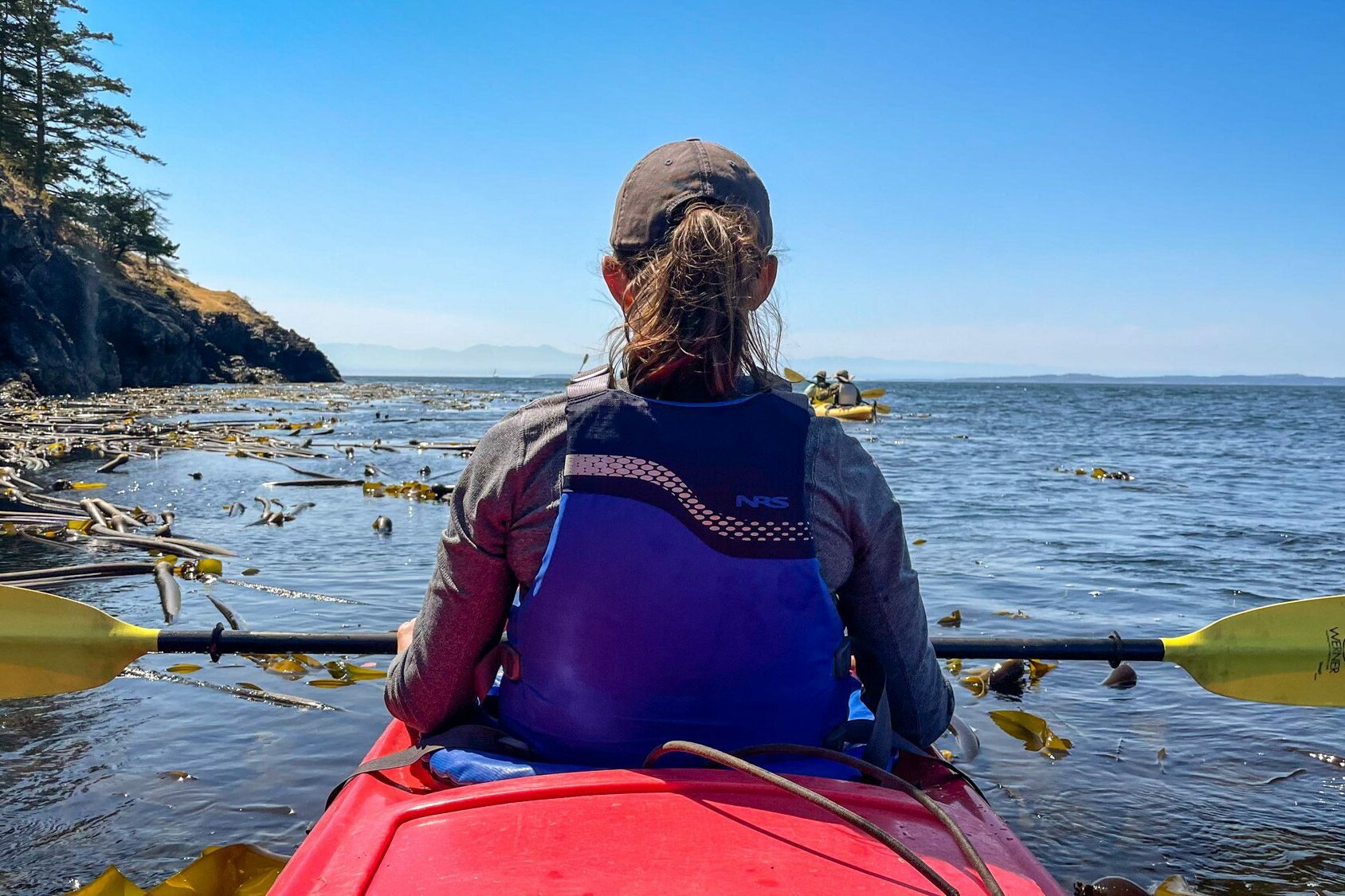
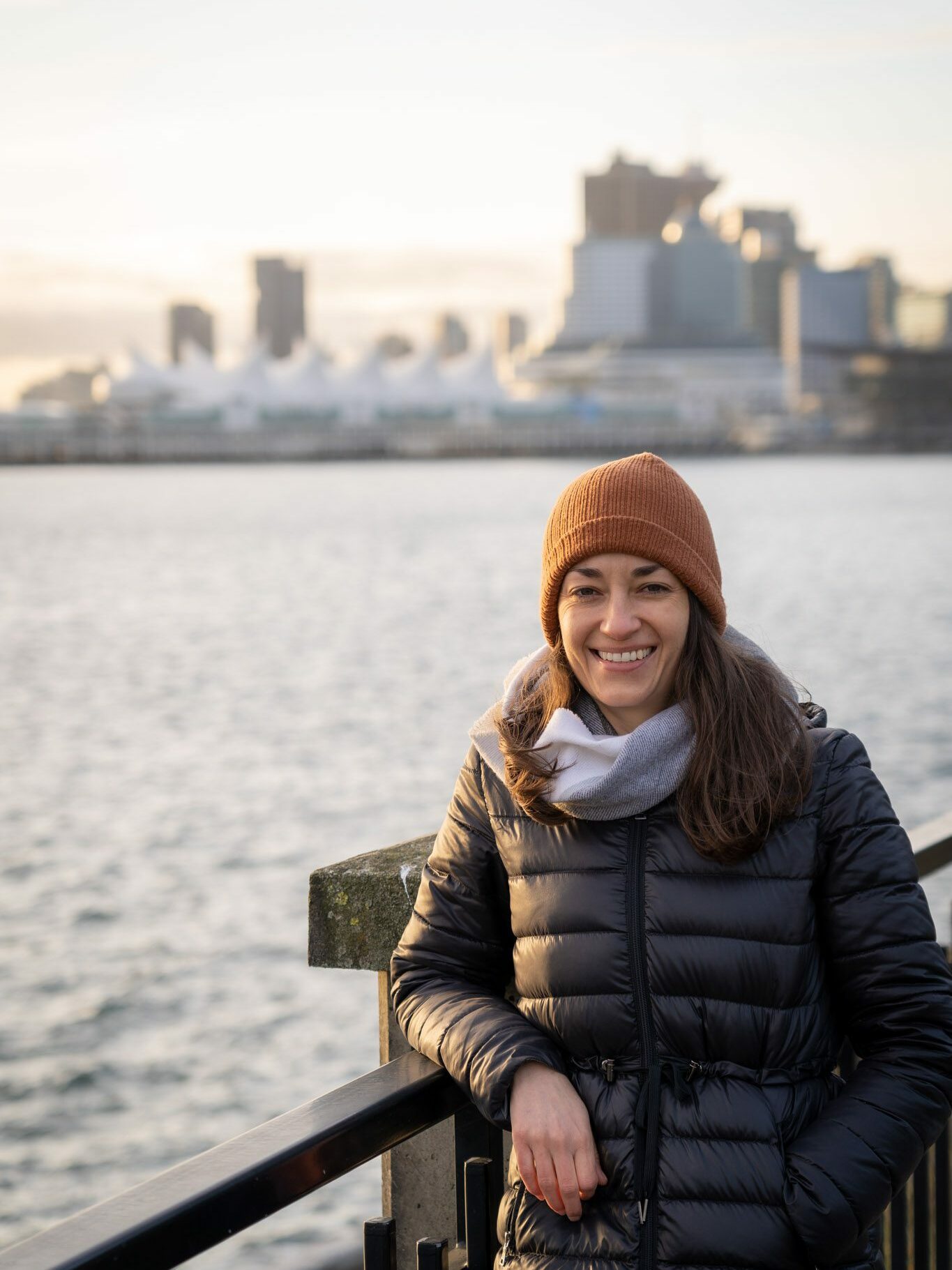
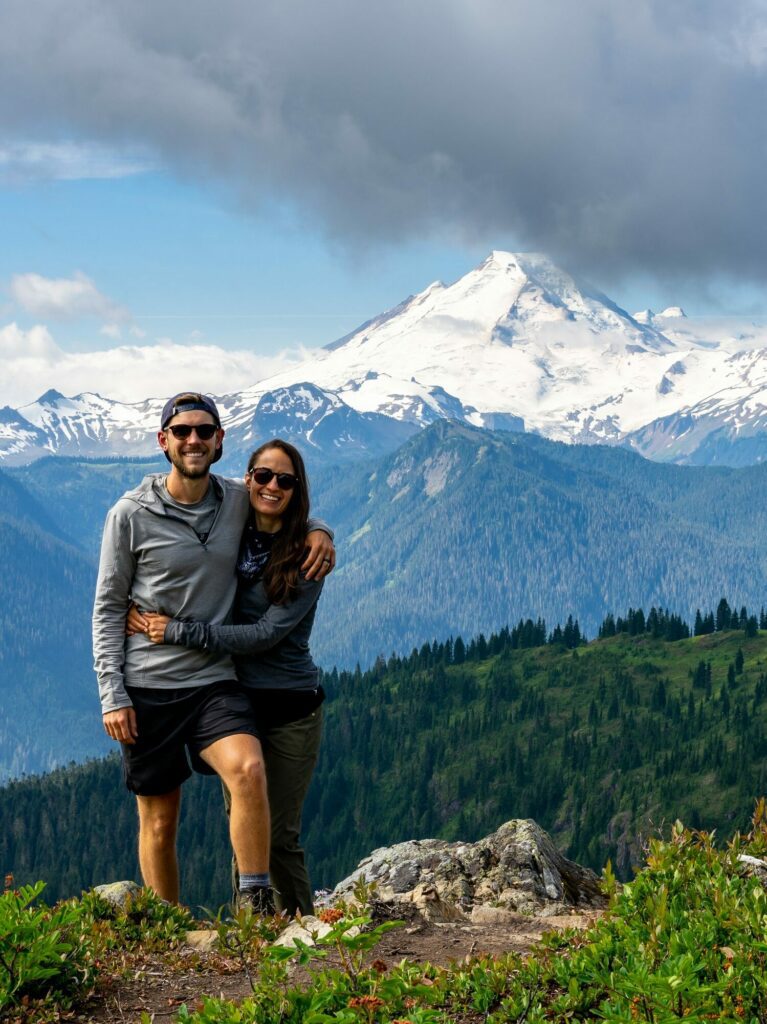
Disclaimer: Some of the links in this post, like hotel links, are affiliate links, meaning at no additional cost to you, we make a little bit of money if you click through and book. That being said, we would never recommend something to you that we don’t stand behind 100%.
Do You Need a Car?
Generally, yes, you’re going to need a car to make the most of these weekend trips. There just isn’t a great train or public transit option for most of them, especially the national parks.
If you don’t have a car, your options are limited. Our top recommendation would be to rent a car for the weekend, but that’s going to add to the cost and sometimes, driving sucks.
If you don’t have a car, and don’t want to rent one, there are a few getaways that are accessible by train or ferry.
They are:
- Portland, Oregon (via Amtrak)
- Vancouver, B.C. (via Amtrak)
- Vashon Island (via Washington State Ferry)
- San Juan Island (via Washington State Ferry)
- Orcas Island (via Washington State Ferry)
However, it’s important to note for the islands that, while you absolutely can get out there using the ferry, a car is going to allow you to do and see far more than going carless.
The Best Weekend Getaways from Seattle: A Complete Guide
And now, on to the weekend getaways themselves.
We’re going to order this guide in terms of our personal preference, which means our absolute favorite weekend getaway destinations are at the top. However, it’s worth noting that if it’s on the list, we would recommend it.
For a bunch of the places on this list, we have more in-depth guides that would be a more useful resource for actually planning your trip. Where it’s relevant, we’ll link you to those so you can save them for your trip planning.
Mount Rainier National Park
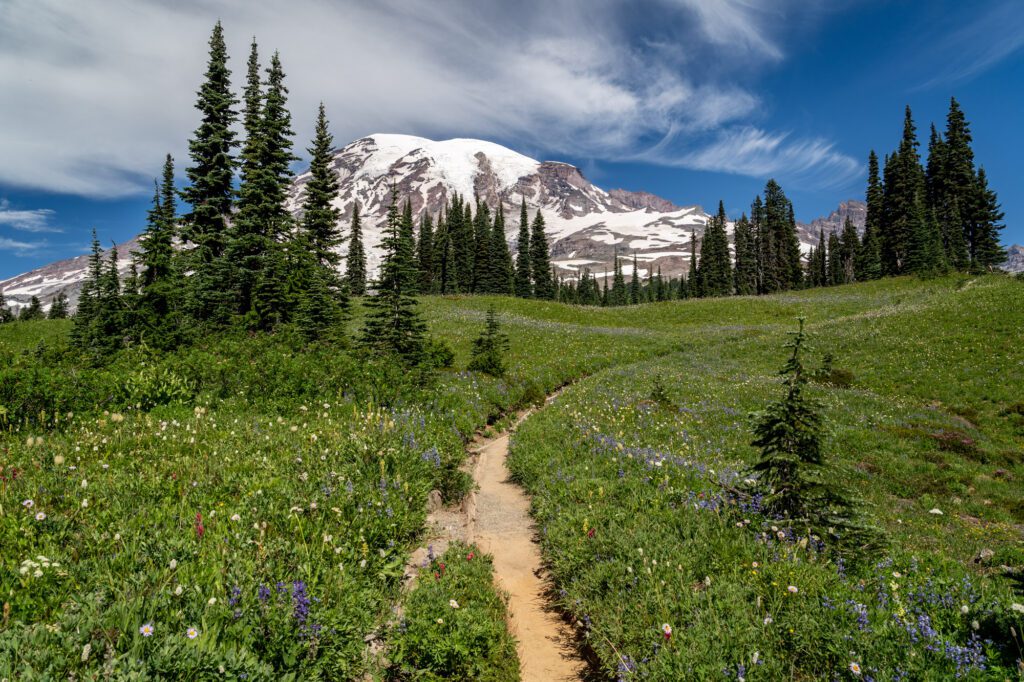
Distance / Drive Time from Seattle: 110 miles / 2 hours 45 minutes
Where to Stay: Because of its size and the geography of the park, it’s complicated. Read our guide to where to stay in Mount Rainier National Park for the details!
At this point, a trip to Mount Rainier National Park is an annual pilgrimage that Alysha and I make.
It’s an excellent national park (and together we’ve been to every national park in the western United States, except for the Channel Islands – which just Alysha has visited), and ranks somewhere in our top 5 national parks that we’ve been to.
One thing we didn’t really realize before moving to Portland is that parts of Mount Rainier National Park are equally accessible from Portland as they are from Seattle (at least if you’re talking about Paradise), which means those annual trips will continue for the foreseeable future.
Before we can get into what to do and see at Mount Rainier, we probably need to touch (briefly) on the park’s geography.
First, Mount Rainier is big. Which creates a bit of an issue when it comes to planning a trip.
The drive time and distance between the two most popular regions of the park – Paradise and Sunrise – is an hour and a half or so,
If you only have a weekend, our strong recommendation would be to focus on one region.
And that region, if you’ve never been to Rainier, would be Paradise for us.
It has the top hike in the Park (more on that in a second), the best collection of waterfalls, and a plethora of wildflower-filled meadows that are bursting at the seams with flowers of all colors in late July and early August.
Plus, it’s the only region of the park that’s accessible year round.
Sunrise is a close second, and it definitely has the best breadth of hikes in the park if you’re after incredible views of Rainier’s glaciated peak. It’s also a little closer to Seattle (it’s on the east side of the Mountain), though it’s basically negligible.
Things to Do at Mount Rainier
Here are some of our favorite things to do at Mount Rainier.
Hike the Skyline Trail. This is the best hike at Mount Rainier (and one of our favorite Washington State hikes), at least in our opinion. We’ve done it multiple times, in both directions, and it never gets old. It has everything you’re looking for when it comes to exploring Rainier – a fantastic waterfall (Myrtle Falls), meadows filled with wildflowers, and in-your-face Rainier views that get better and better the further you get into the hike. Oh, and wildlife! We’ve seen both cute chubby marmots and elusive elegant mountain goats. Here’s our guide to the Skyline Trail with more information and pictures so you can see what we mean.
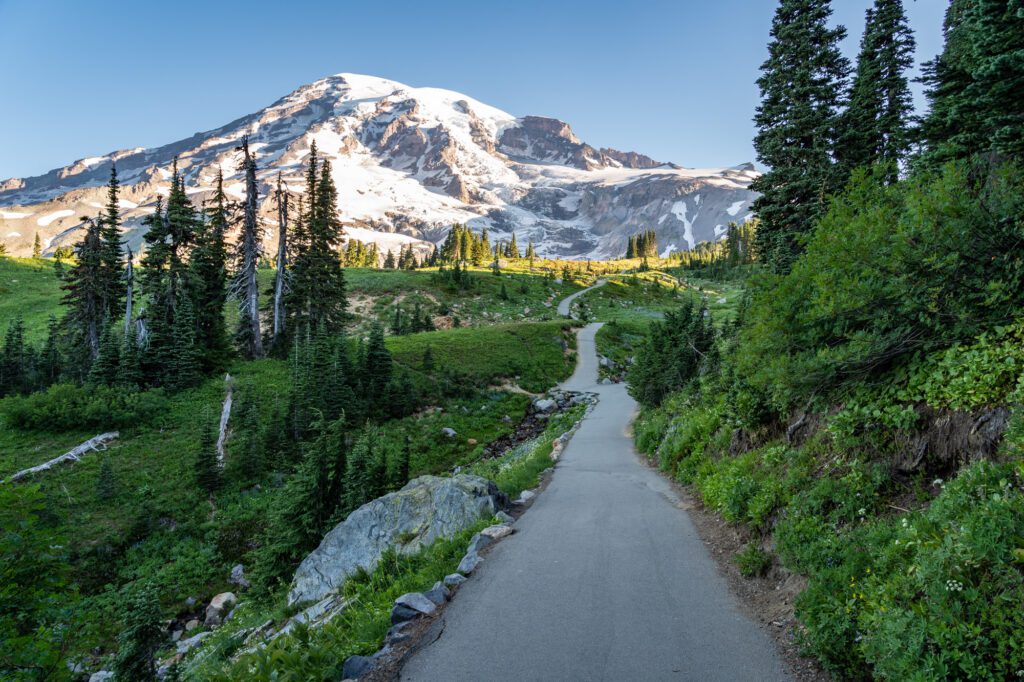
Chase waterfalls at Paradise. Like we touched on above, Paradise is also great because you have the best collection of waterfalls in the park. Myrtle Falls, which is right near the Henry M. Jackson Visitor Center, is cool because the backdrop for the falls is Rainier’s snow capped peak. Getting to Comet Falls requires a little bit of a hike, but it’s the most impressive of the falls in the park. Christine Falls is cool because of the framing created by the stone bridge. So many waterfalls, so little time!
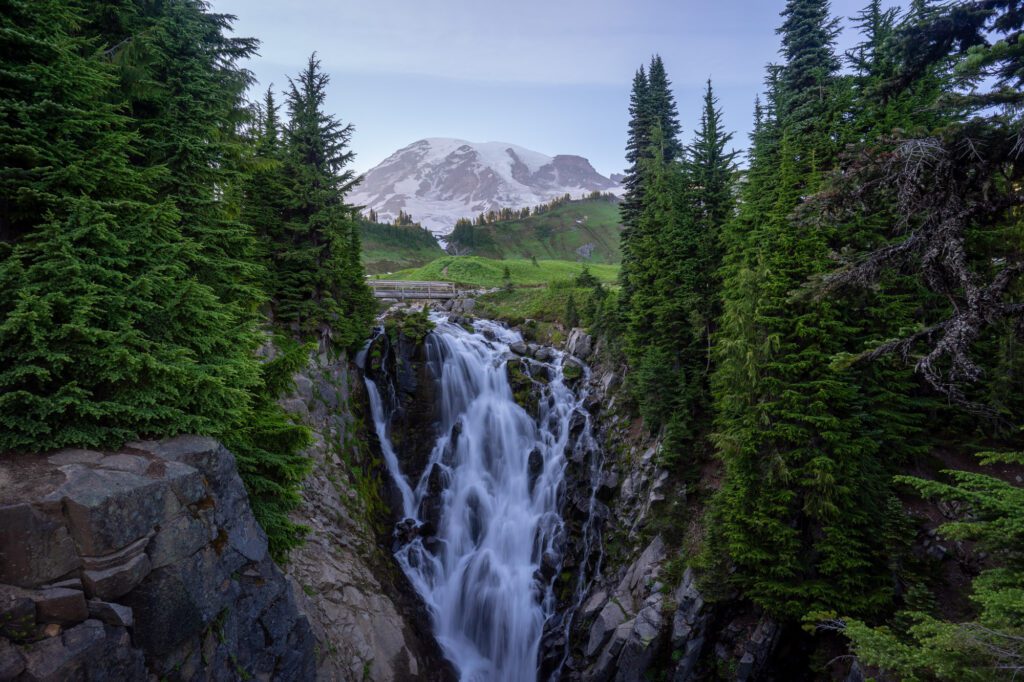
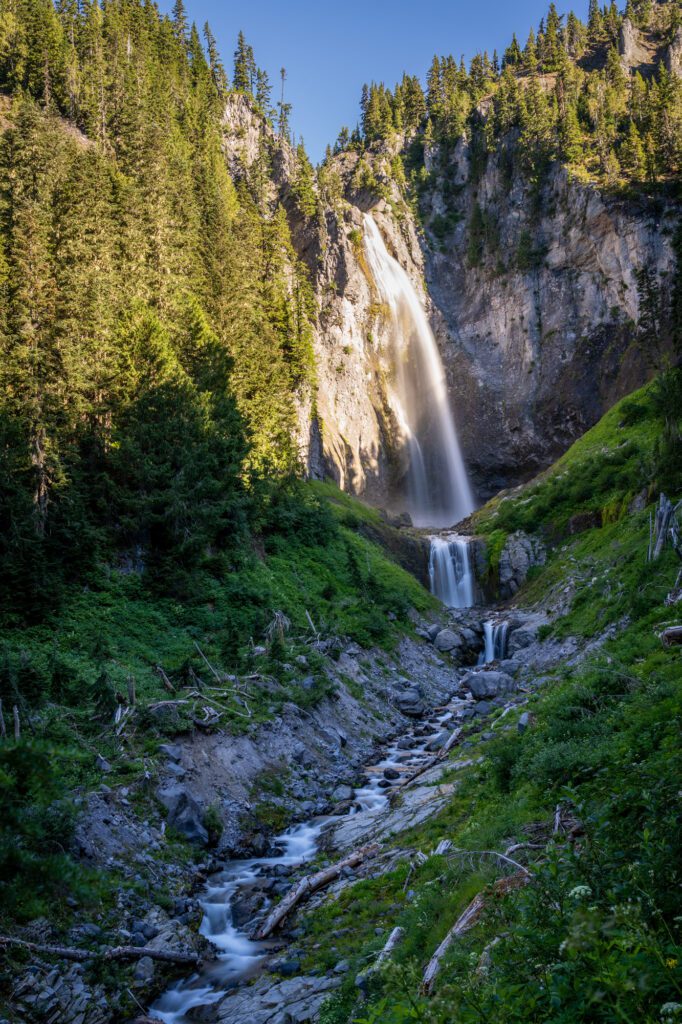
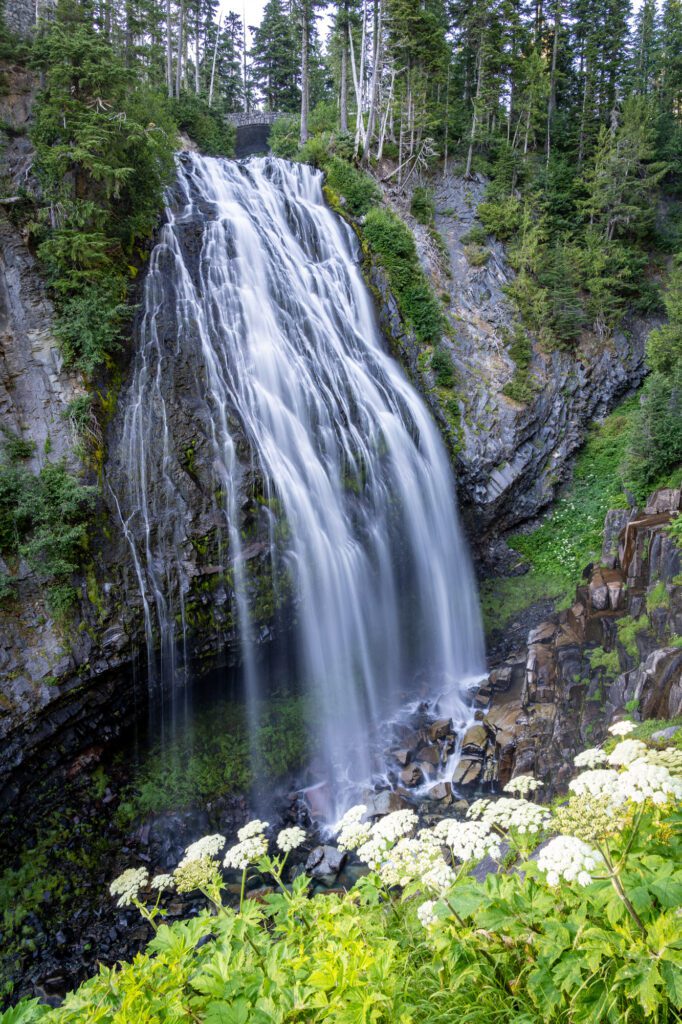
Explore Sunrise. Sunrise is the highest elevation you can drive to in the park, and it also has the best breadth of hikes out of the park’s regions. And they all leave from the Sunrise Visitor Center. All three of these hikes follow the same basic path along Sourdough Ridge, where you’ll have incredible views of Rainier and the White River Valley, before diverging at Frozen Lake, heading in three different directions.
- The Burroughs Mountain Trail: Our favorite of the three here, this hike is hard. It takes you up to a point where it really feels like you can reach out and touch Mount Rainier’s face. There are three burroughs, and the journey to the first two is relatively easy. To get up to the third burrough, it’s a steep, long climb, but we think the views are worth it. Read our Burroughs Mountain Trail guide for more information.
- The Mount Fremont Lookout: Do this trail for the views from the retired fire lookout, which has a commanding view of the surrounding landscape, including Rainier. The hike heads right at Frozen Lake, and climbs up to a ridge that you follow out to the lookout. Keep your eyes open for marmots, and bring bug spray in the early summer – we’ve never seen more mosquitoes in our lives than we did at the top of this hike. More trail information here.
- Berkeley Park: This is the hike to do for an epic wildflower show in the summer (we had good success with the last week of July). The trail heads straight at Frozen Lake, dropping down into an idyllic meadow full of blankets of wildflowers, babbling brooks, and… black bears. This area is a favorite haunt of the park’s black bear population, and it’s easy to see why. We’d like to live there, too. Keep your wits about you, make some noise on the trail, and you’ll be fine. More trail information here.
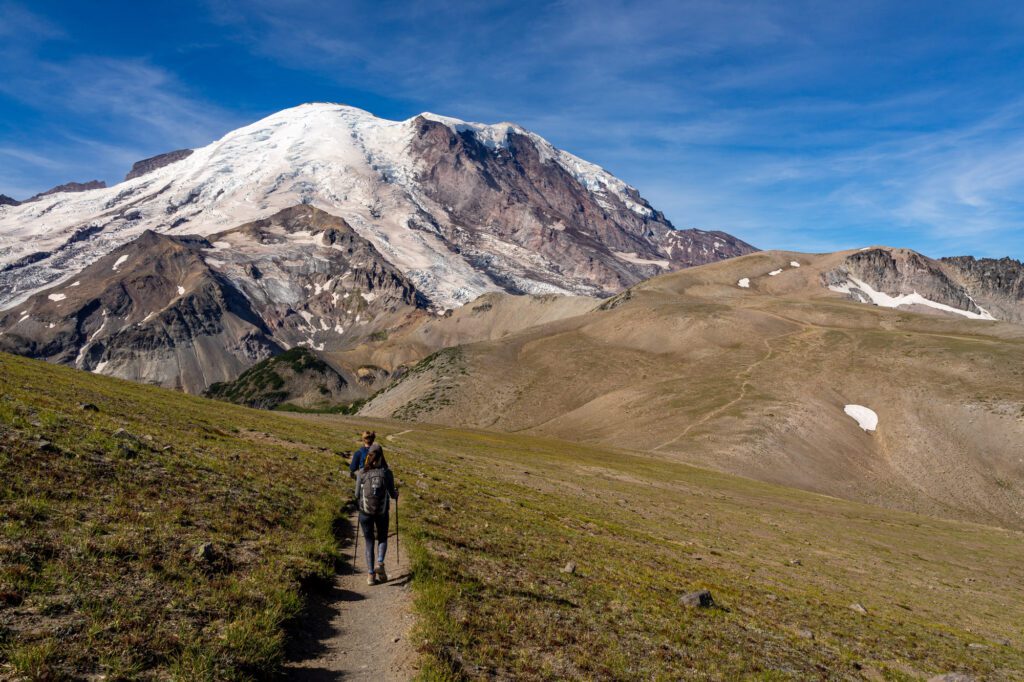
Obviously, that’s not everything we have to say about Mount Rainier. For more detail, we’d encourage you to go read our more in-depth guides to exploring Mount Rainier National Park.
Planning a Trip to Mount Rainier National Park? You won’t want to miss our detailed guides to visiting Mount Rainier that are all based on our own personal experience exploring the park.
- All the Best Things to Do in Mount Rainier National Park
- How to Plan an Unforgettable Day Trip to Mount Rainier From Seattle
- Where to Stay near Mount Rainier National Park: A Complete Guide
- The Best Hikes in Mount Rainier National Park: A Helpful Hiking Guide
- Hiking the Skyline Trail: Is This the Best Hike in the Entire State?
- Hiking the Jaw-Dropping Burroughs Mountain Trail at Mount Rainier
- Hiking to Towering Comet Falls in Mount Rainier National Park
- The Naches Peak Loop: The Best Bang-for-your-Buck in Washington
Olympic National Park
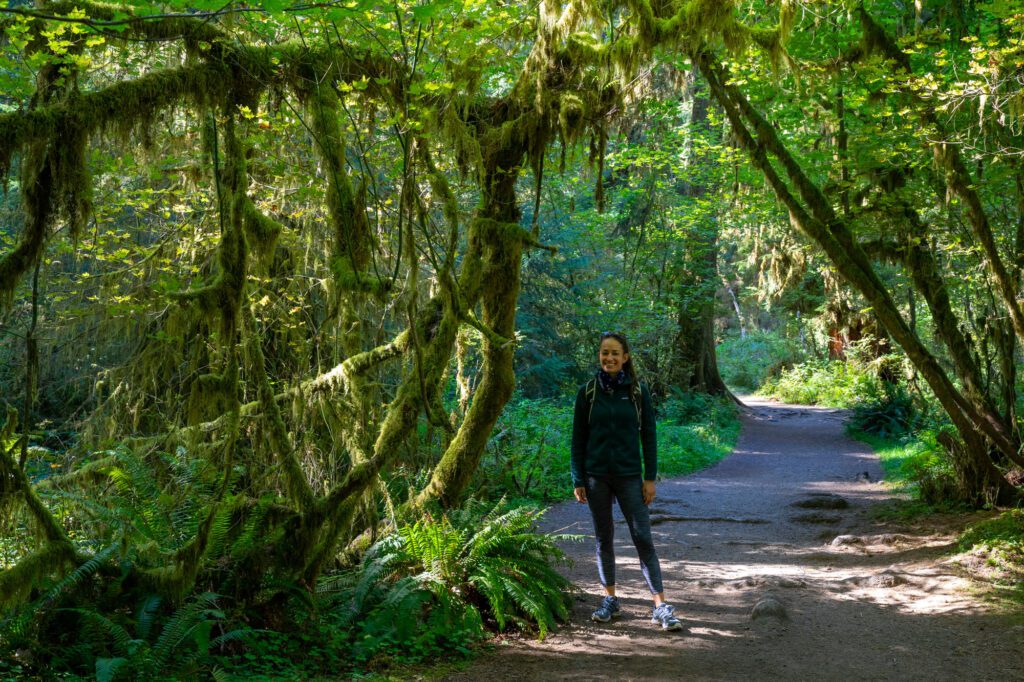
Distance / Drive Time from Seattle: 85 miles / 2 hours 30 minutes (includes Bainbridge Island Ferry)
Where to Stay: Because of its size, it’s complicated. Read our guide to where to stay in Olympic National Park for the details!
Olympic National Park is one of the most diverse places in the Pacific Northwest in terms of geography and geology.
If you’re looking to experience that “mountains meet the sea” idea that we mentioned in the introduction, this is an excellent example. Within an hour of each other along US-101, you have the snowy peaks of the Olympic Range and the rugged, rocky coastline of the Pacific beaches.
Whether you’re into hiking miles and miles at a time, or you just want to do a short stroll to the beach, you’re going to love Olympic National Park.
The biggest problem with Olympic National Park is figuring out what to do and see, and how to organize your time (lucky for you, we have an entire Olympic National Park itinerary dedicated to helping you do just that).
It’s a huge park, which means lots of driving if you end up having to backtrack.
Our biggest tip is to spend your weekend doing a loop that starts in Port Angeles, works your way down towards Forks, and loops down past Lake Quinault, returning to Seattle through Olympia.
If you stay in one place – say, Port Angeles or Forks – you’re going to be doing a lot of driving to get back and forth between places. For context, it’s a 1 hour and 45 minute drive between Hurricane Ridge (the alpine part of the park) and Forks (the Pacific Coast beaches).
Then it’s ANOTHER hour to get from Forks to the Hoh Rainforest.
Trust us – book one night in Port Angeles, and one in Forks, and make a giant loop around the Olympic Peninsula.
It is 82 miles to Port Angeles (the jumping off point at the western edge) if you take the car ferry to Bainbridge Island from Seattle, or 138 miles if you just go by road.
The journey time is about the same: just short of 2 ½ hours. From Port Angeles to the Hurricane Ridge Visitors Center is about 20 miles, and it’ll take you about 45 minutes.
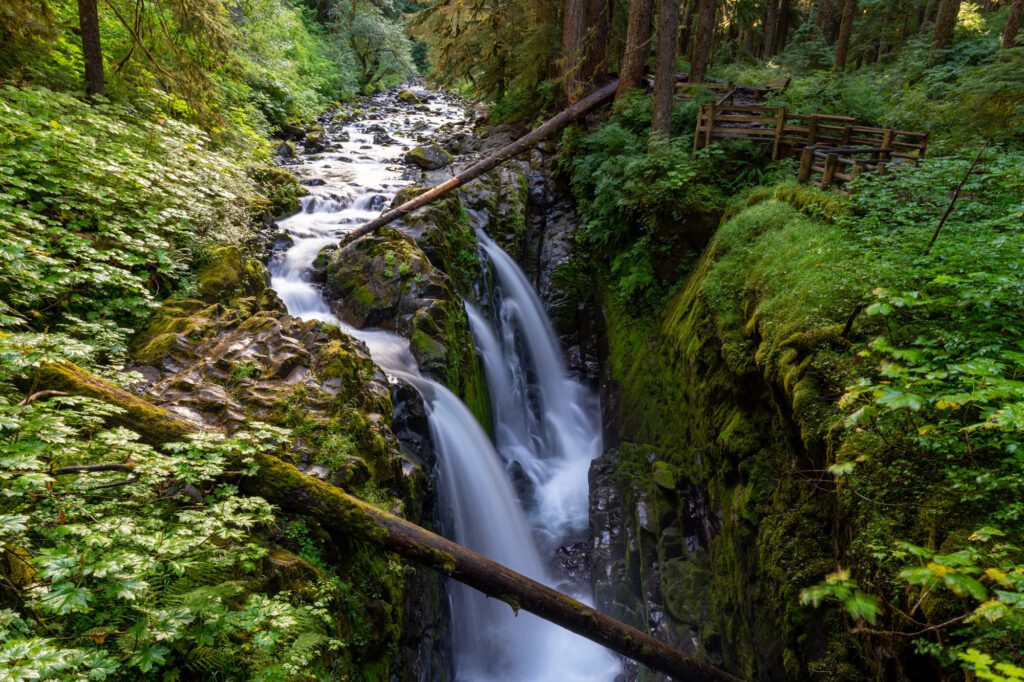
Things to Do in Olympic National Park
There is plenty to do and see in Olympic National Park to fill an entire week (if not more), which means you’ll have to pick and choose what you do and see if you only have a weekend.
With a couple of days, we’d focus on four areas: Hurricane Ridge, Lake Crescent, the Pacific Coast beaches, and the Hoh Rainforest.
With a few extra days, you can add on the north Pacific Coast (near Neah Bay) and the Quinault Rainforest and Kalaloch Beach area.
Here’s what to do in each of those areas.
Hurricane Ridge. Hurricane Ridge is one of the alpine sections of the park, and it’s where you’ll find the best views of the surrounding peaks because you climb up to, well, a ridge. First and foremost, stop at the Visitor Center and admire the view from right there out back. It gets even better if you walk up the short trail across the parking lot. Then hike the trail up to Hurricane Hill, which is one of our favorite hikes in Olympic National Park. On a clear day, you can see Mount Baker and Victoria, B.C. (you might even be able to make out Vancouver’s skyline, if you’re lucky). Last, drive out to Obstruction Point, which is a dirt road that takes you along a narrow ridge with excellent mountain views on either side.
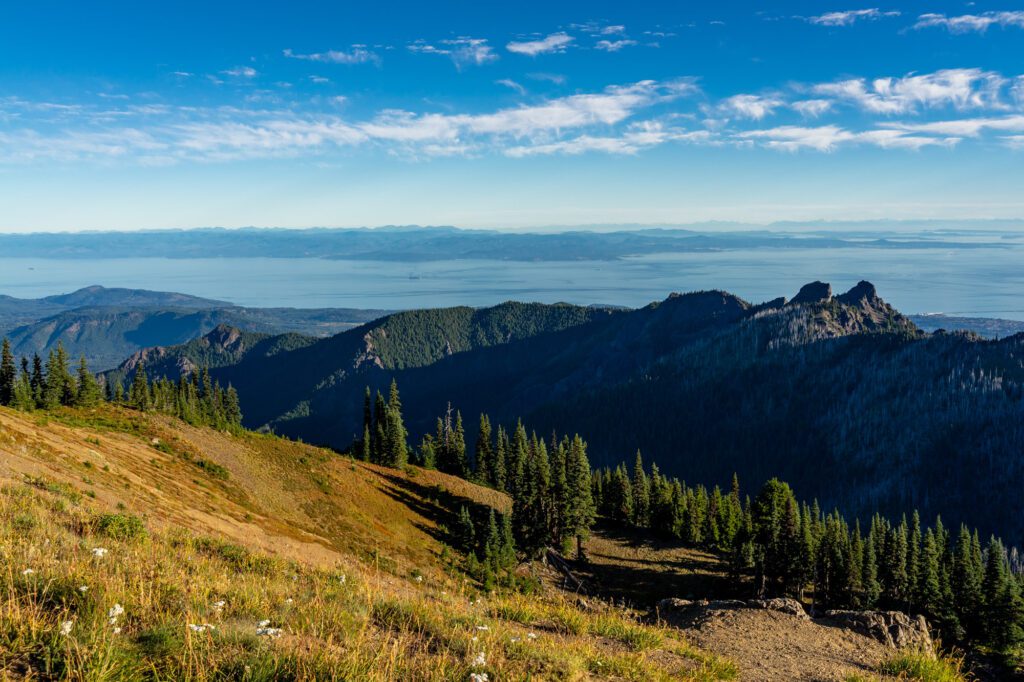
Lake Crescent. Lake Crescent is just west of Hurricane Ridge, but it’s down at sea level. The lake itself is cool, and it’s worth heading out to the Lake Crescent Lodge for a drink on the shore. You should also do the short hike to Marymere Falls, and if you’re feeling adventurous, the longer climb up to Mount Storm King (which has great views of the lake from above).
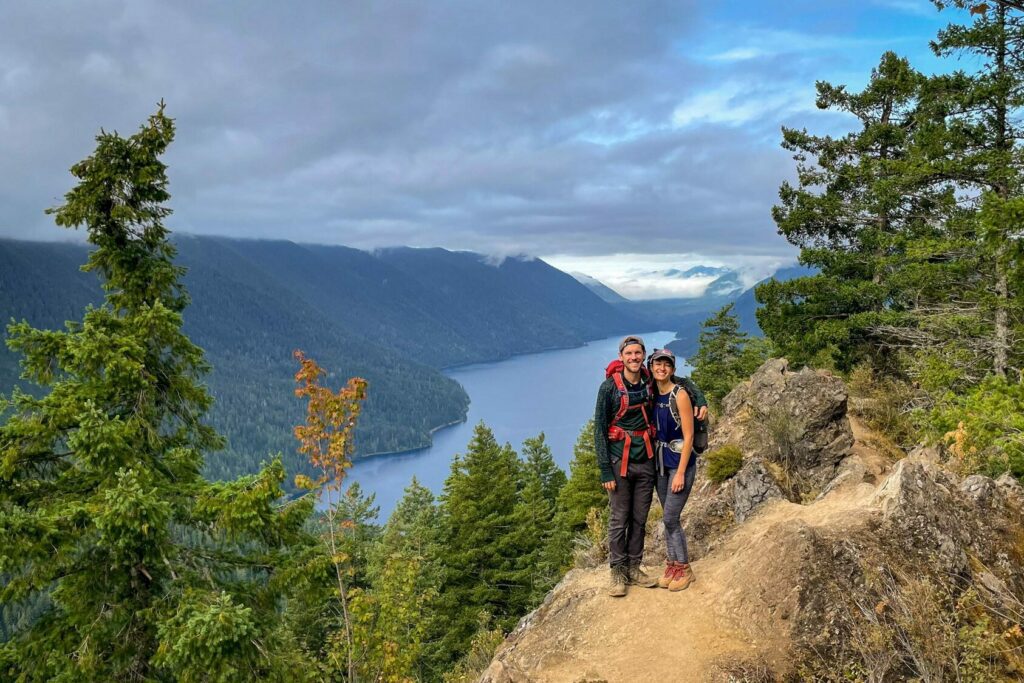
Pacific Coast Beaches. There are a bunch of beaches lining the northwest Washington coast, but our favorites are Rialto and Ruby (honorable mention for Second Beach in La Push). At Rialto Beach, walk along the beach out to Hole in the Wall (which is exactly what it sounds like). At Ruby Beach, walk down the short path to get down to the driftwood laden beach, and check out the sea stacks just offshore.
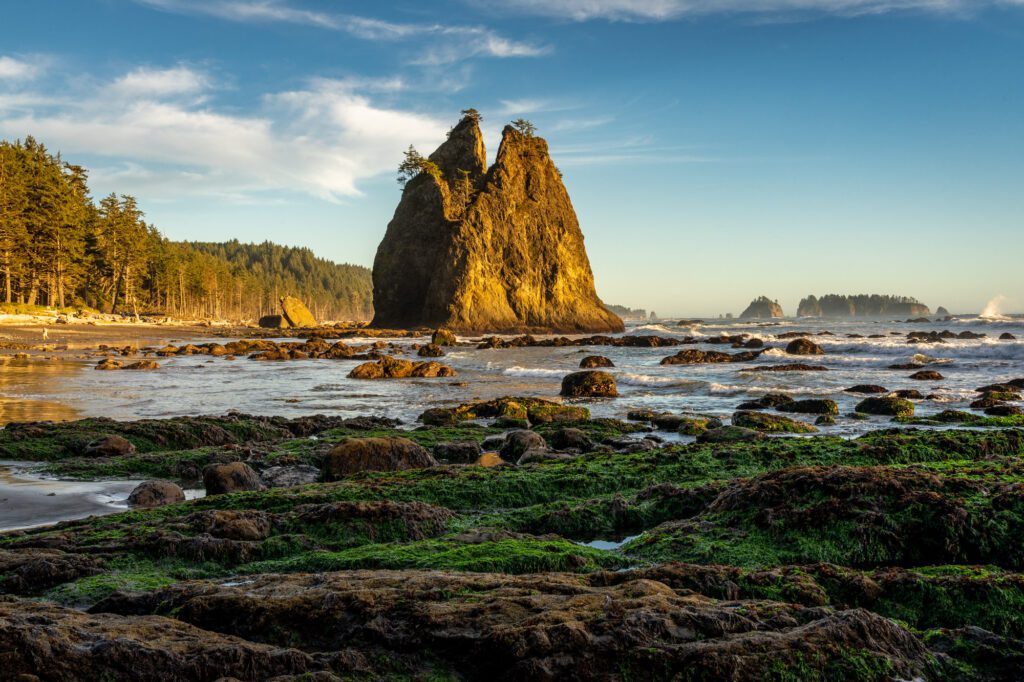
The Hoh Rainforest. This is a wild place, y’all. This is perhaps the best example of a coastal temperate rainforest in the country. You think Seattle is wet? This place gets an incredible 10 feet of rain per year. Which is why it’s so lush, with bright green ferns and mosses growing from every inch of ground. Seriously, I’ve seen shades of green here that I didn’t know existed in the natural world. Walk the short and easy Hall of Mosses, then do the first two miles of the Hoh River trail until you get out to the…Hoh River, which is an excellent longer hike through the rainforest (and it’s flat and easy).
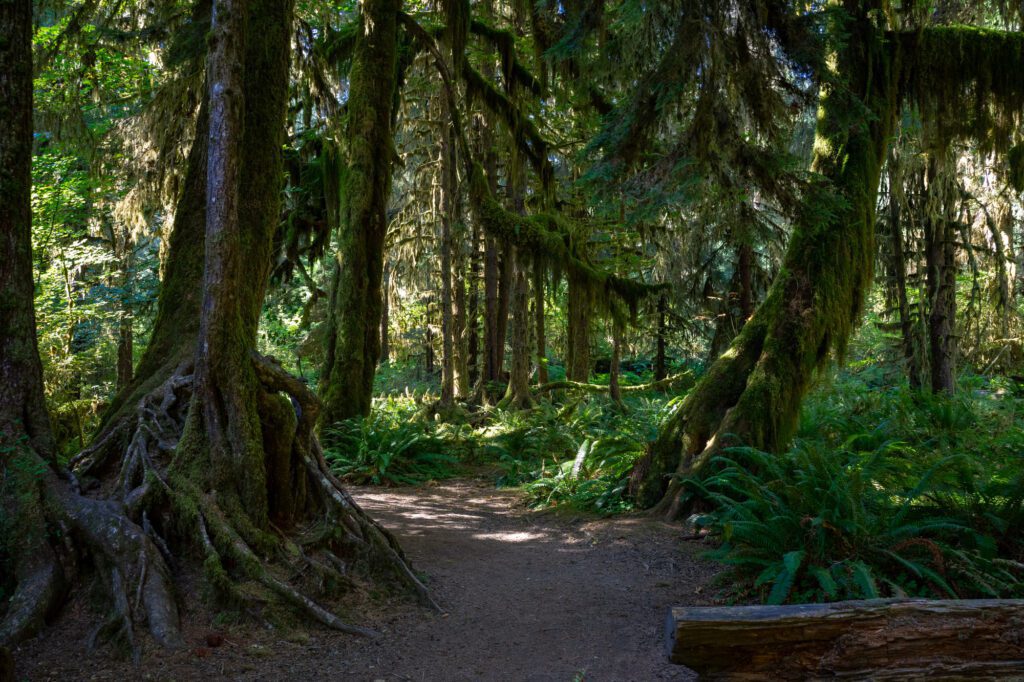
Planning a Trip to Olympic National Park? You won’t want to miss our detailed guides to visiting the Olympic Peninsula that are all based on our own personal experience exploring the park.
- All of our Favorite Things to Do in Olympic National Park
- How to Plan a Perfect Olympic National Park Itinerary (3-4 Days)
- Where to Stay in Olympic National Park: A Complete Guide
- The Best Hikes in Olympic National Park: A Helpful Hiking Guide
- Hiking the Enchanted Valley Trail: A Perfect 2-3 Day Backpacking Trip in Olympic National Park
Orcas Island
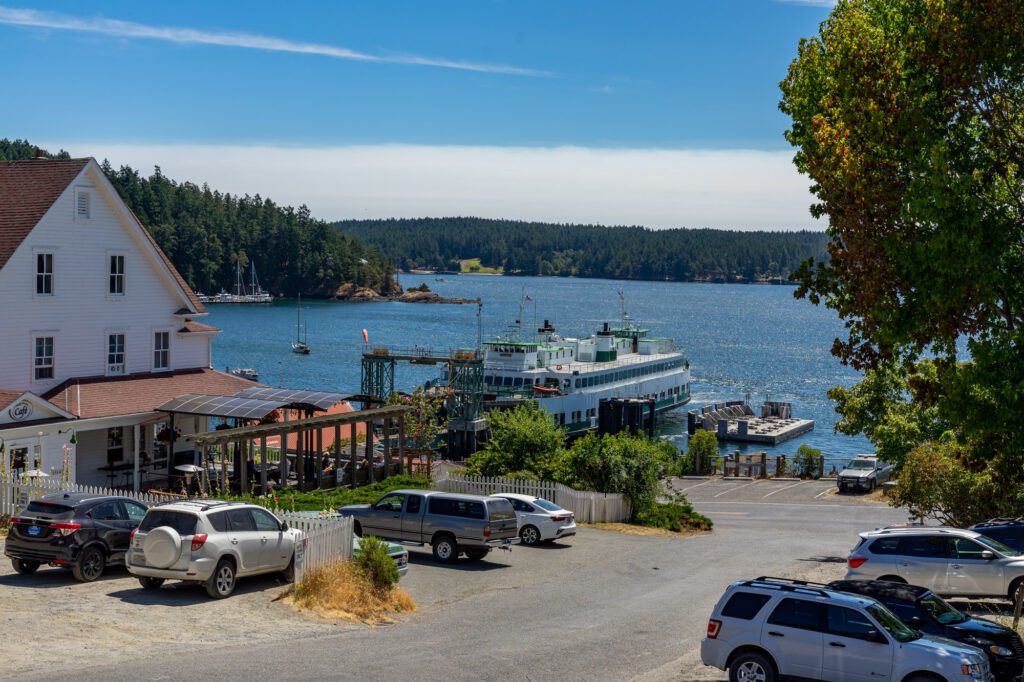
Distance / Drive Time from Seattle: 103 miles / 3 hours 30 minutes
Where to Stay: Stay at the Outlook Inn if you want a hotel right in the town of Eastsound. If you want a charming bed and breakfast, look at the Kangaroo House B&B.
The largest island in the San Juans also happens to be our favorite. We like San Juan Island, which is significantly more “commercialized” (for lack of a better word), but the laid back nature of Orcas combined with the plethora of outdoor activities puts it right in our wheelhouse.
If you’re looking for a relaxing island getaway from Seattle, Orcas is our top pick.
The journey begins from the ferry terminal in Anacortes, where you’ll board the ferry (we’d suggest boarding with your car, which you really need to get around on the island) and embark on a scenic boat ride through the San Juans to the ferry terminal on the southwest end of Orcas.
As soon as your feet touch down on the island, you’ll be transported to a different world, where work emails don’t seem so pressing, and you’re not in a rush to get to your next stop.
After two or three days of island time, you might find yourself wondering why you don’t live like this all the time.
What to Do on Orcas Island
We love Orcas, and actually have two entire guides devoted to exploring the best that Orcas has to offer – our guide to hiking on Orcas Island covers our favorite hikes on the island, and our guide to the best things to do on Orcas gives you a starting point for planning your trip.
Here’s a brief overview of what you’ll find on Orcas Island.
Hiking. There is some fantastic hiking on Orcas, which is something that is sorely missing from San Juan Island in our humble opinion. Two dueling mountains – Turtleback on the west side, Mount Constitution on the east – offers a variety of hiking trails for all skill levels. We like the 6.5 mile Turtleback Loop from the south trailhead (but mostly the first bit up to Ships Peak, which has all best views) and the hike from Little Summit up to the top of Mount Constitution (adventurous hikers can do the full loop from the shore of Mountain Lake, which is 8 miles and 1,700 feet of climbing).
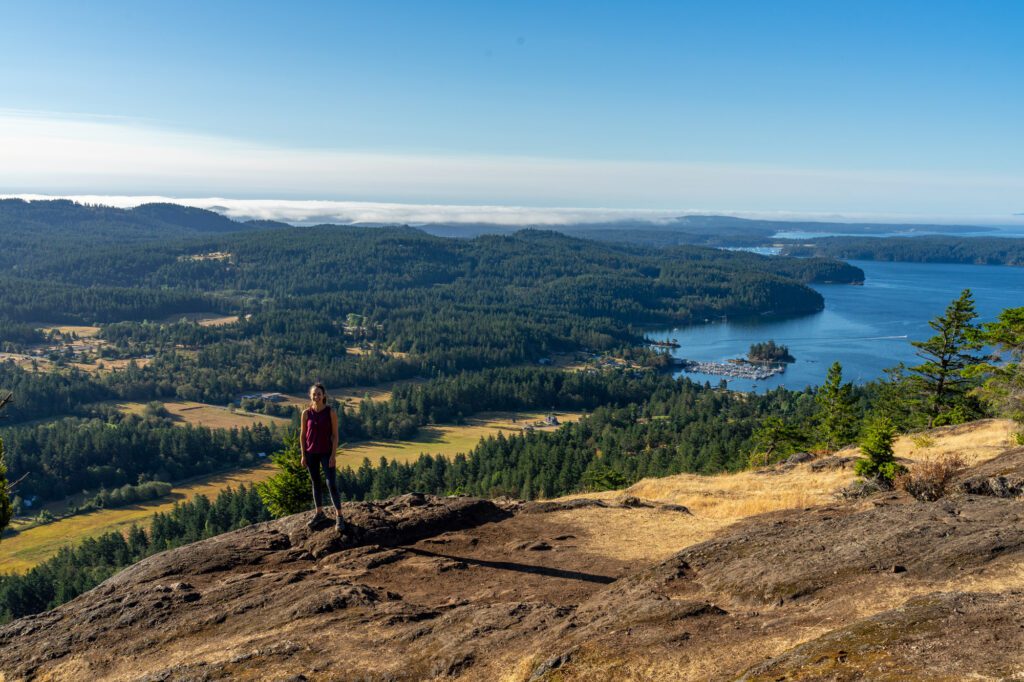
Wine Tasting. There are two places to go wine tasting on the island. Orcas Island Winery is on the west side of the island, and is the only traditional winery (in the sense that there’s a big property with a tasting room) on the island. It’s locally owned since 2019, and we had a pet-nat rose that we really enjoyed. The property is beautiful, with the barn style tasting room as the focal point. The second place is Doe Bay Wine Company, which is a teeny tiny locally-owned wine shop in Eastsound where you can taste wines from their house label the Orcas Project, or buy bottles of wine and cider from all over, including the San Juan Islands.
Exploring Eastsound. Eastsound is the largest town on the island, and it’s a charming little place that is only a couple of blocks in area. Here are some of our favorite stops:
- Brown Bear Baking for delectable pastries (NOT GLUTEN FREE, but Alysha loved them as did the broader family we brought them back to)
- Darvill’s Bookstore for browsing the best local bookstore on the island (and also the best coffee shop, but it’s closed on weekends)
- Doe Bay Wine Company for wine tasting
- Clever Cow Creamery for ice cream
- Printshop for on-demand screen printed t-shirts with designs from local artists
- Girl Meets Dirt for amazing fruit preserves made from Orcas Island fruit
- Orcas Food Co-Op for the best grocery store on the island.
Hit the Lake. There are two beautiful lakes on the island – both in Moran State Park – with plenty of opportunities for swimming, canoeing, kayaking, and stand up paddle boarding. Cascade Lake is the more heavily visited of the two, mostly because the campground for Moran is along its shore. They rent boats on a first come, first served basis. It’s a popular spot, so get there early. Mountain Lake is further into Moran State Park, and has a couple of cool islands in the middle that are a good place to explore by kayak. Both lakes have hikes that circumnavigate the lake, which are mostly flat and make for a nice leisurely stroll.
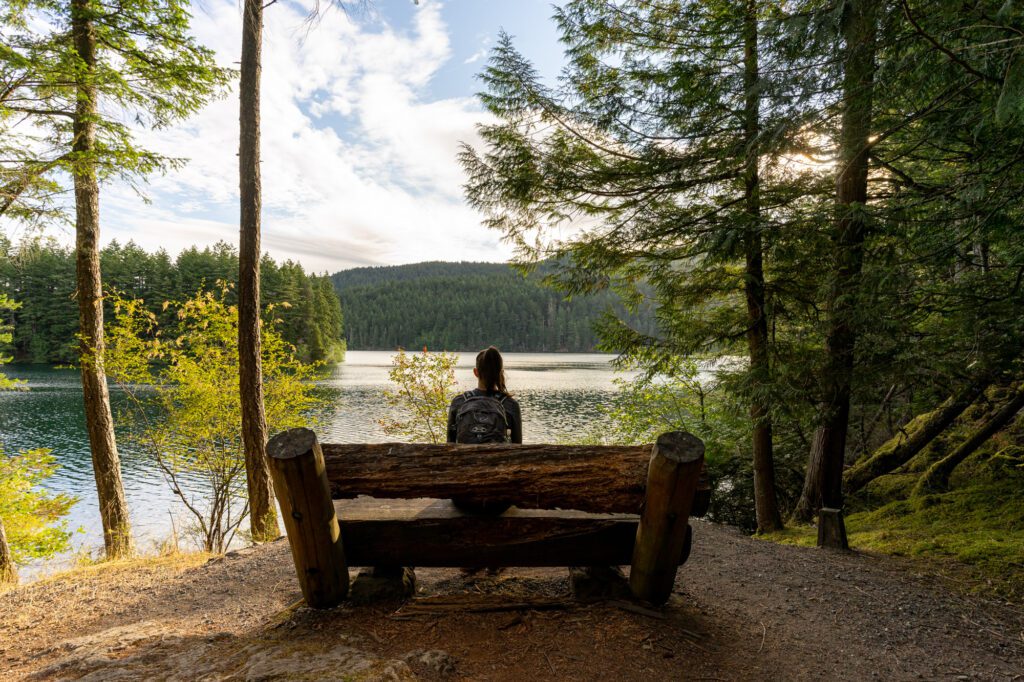
Mount Baker
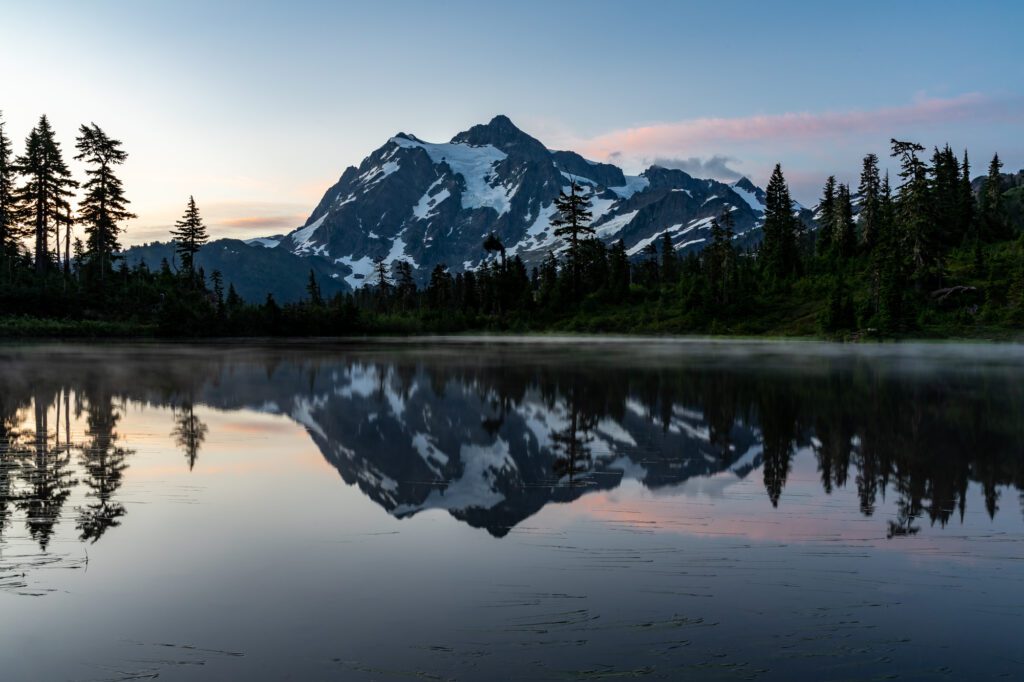
Distance / Drive Time from Seattle: 140 miles / 2 hours 30 minutes (to Artist Point)
Where to Stay: Camp at either Douglas Fir or Silver Fir Campground, or find a cabin along the road leading to Baker
Mount Baker was the unsung hero of our recent Washington Road Trip. We loved it! Neither of us had ever been, although we had visited the North Cascades, and some of our favorite hikes in Washington are on the north side of Mount Baker.
And, to be clear here, we are talking about the north side of Baker along Highway 542.
Especially the area around Artist Point, where you’ll find spectacular views of both Mount Baker and Mount Shuksan, along with the rest of the North Cascades.
The thing we really like about Mount Baker is the lack of crowds, even in the height of summer. We were up there in August and saw a tiny fraction of the people we saw in the North Cascades just on the other side of the mountain.
And that means a fraction of a fraction of the people in places like Rainier and Olympic.
Things to Do at Mount Baker
The highlight here is hiking, and there’s not much else to do in the area.
IMPORTANT NOTE: The hiking season is incredibly short because of the elevation and location. Snow will be on the trail well into August, and returns in October most years. HOWEVER, it turns into a winter wonderland, and outside of that short summer hiking season, it would be a fantastic romantic getaway. Particularly if you stay at one of the many incredible cozy cabins you’ll find nearby.
Here are a few of our favorite hikes in the area.
Yellow Aster Butte. Our favorite trail we’ve done at Baker. The Yellow Aster Butte Trail takes you up on a pretty steep climb before it levels out a bit and you stroll through a beautiful valley, full of wildflowers in the summer. You’ll round a corner and see Mount Baker straight ahead. Wind along the ridge and eventually you’ll start the ascent to the high point of the hike, where you’ll have 360 degree views of the area, including Mount Baker and Mount Shuksan. It’s a long hike with a good amount of elevation gain (7.5 miles / 2,550 feet), but it’s so worth it once you reach that summit.
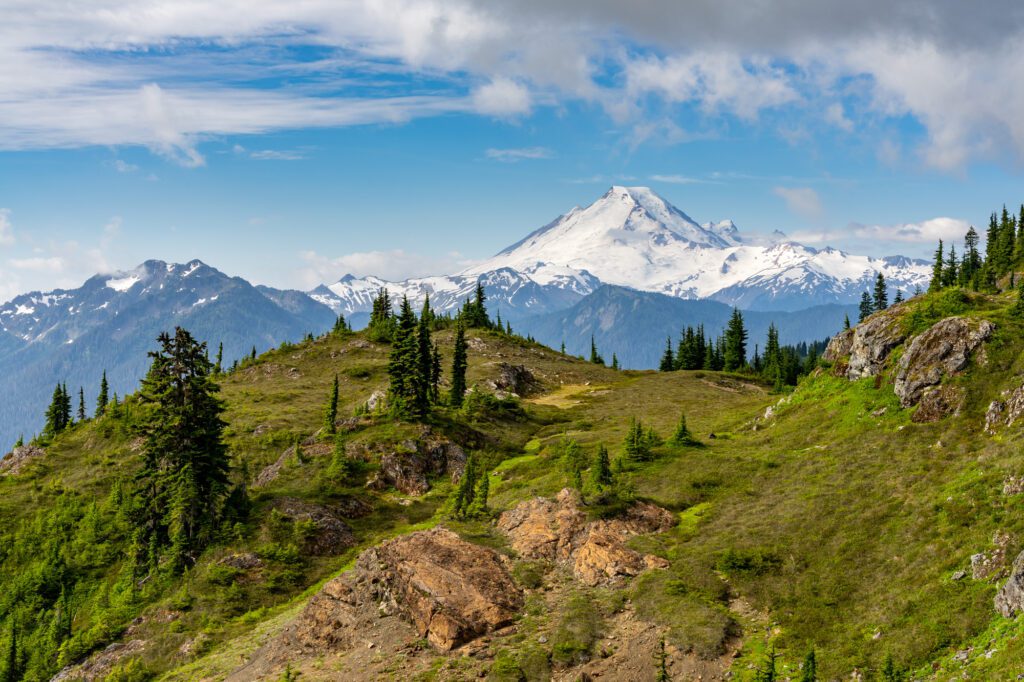
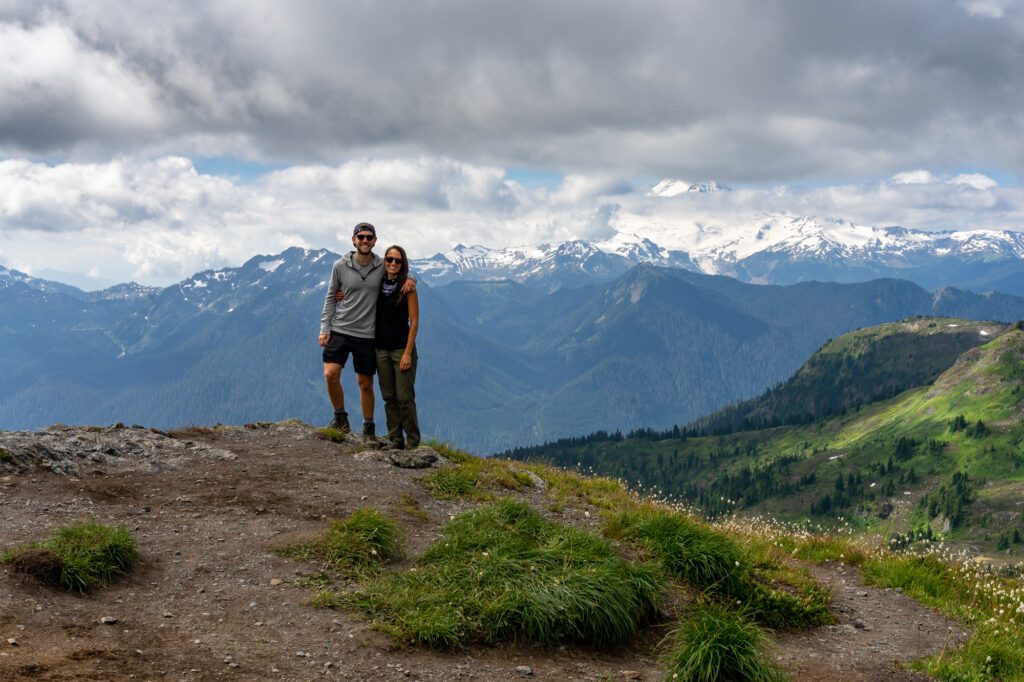
Lake Ann. Another favorite. The end point is a beautiful hanging lake high in the mountains where the only people you’ll come across are backpackers. Throughout the climb, you’ll have incredible views of Mount Baker across the valley. At least, if it’s not shrouded in fog at the summit. It’s a long one (9+ miles, 2,600 feet elevation gain), but again, WORTH IT.
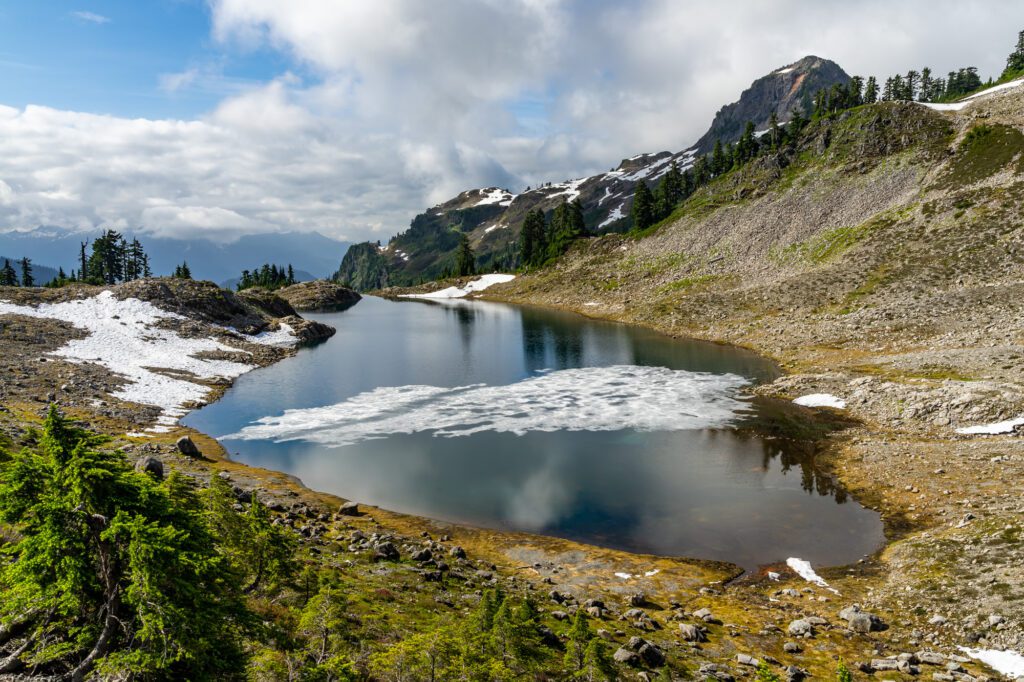
Other hikes near Baker. Two other hikes we loved were the Chain Lakes Loop, which was an easy hike past several Alpine Lakes, and Park Butte, which is on the other side of Mount Baker, but is worth the detour for the hike up to an old fire lookout with Mount Baker RIGHT IN YOUR FACE.
Postcard Views. For incredible views, you’ll want to go to Picture Lake (here on Google Maps) at either sunrise or sunset, and Artist Point (here on Google Maps).
Both are basically right off the road, although Artist Point does require a short climb to get to the viewpoint.
North Cascades National Park
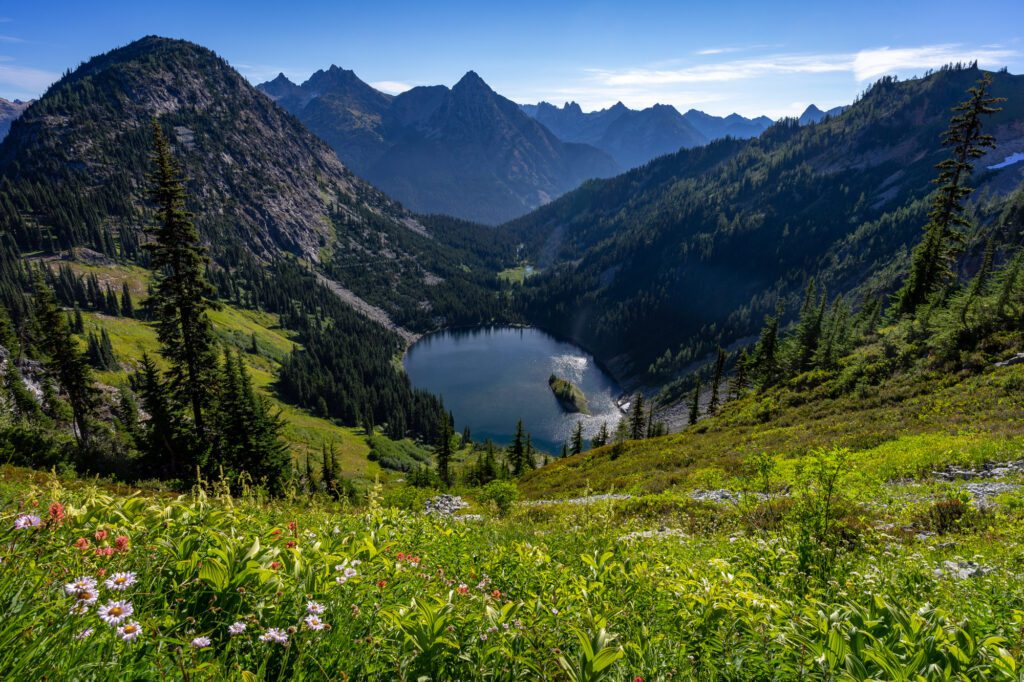
Distance / Drive Time from Seattle: 125 miles / 2 hours 30 minutes (to Diablo Lake)
Where to Stay: There are two campgrounds in the park – Colonial Creek and Newhalem – that you’ll want to reserve as far in advance as possible for summer trips. Winthrop – on the eastern edge of the park – is the best home base if you’re not camping because of its proximity to our favorite hikes in the park.
Of the three national parks in Washington State, the North Cascades are by far the least visited.
That’s partially because the season is so maddeningly short – the road through the park is only open June to October most years, and trails aren’t clear of snow until July or so – and also because it’s relatively compact.
For whatever reason, despite growing up in the Seattle area, the North Cascades were my first national park in Washington… at the age of 25.
A good reminder that no matter how well you think you know a place, there are probably some amazing places to explore in your own backyard.
If you’re looking for a mountain getaway that consists of jagged rocky peaks, turquoise alpine lakes, and tons of amazing hiking, then the North Cascades are for you.
Things to Do in the North Cascades
Here are some of our favorite things to do in the North Cascades.
Hiking in the North Cascades. The North Cascades is home to way too many amazing hikes to tackle in just a weekend. Here are a few of our favorites.
- The Heather-Maple Pass Loop, which climbs to a ridge above a beautiful alpine lake, is our favorite hike in the state of Washington.
- Blue Lake is a great, relatively easy, family-friendly hike to a crystal-clear lake backed by rocky peaks.
- The hike to Hidden Lake Lookout is as spectacular as it is difficult – the end of the trail is a perched lake with the peaks of the North Cascades rising above it in the distance.
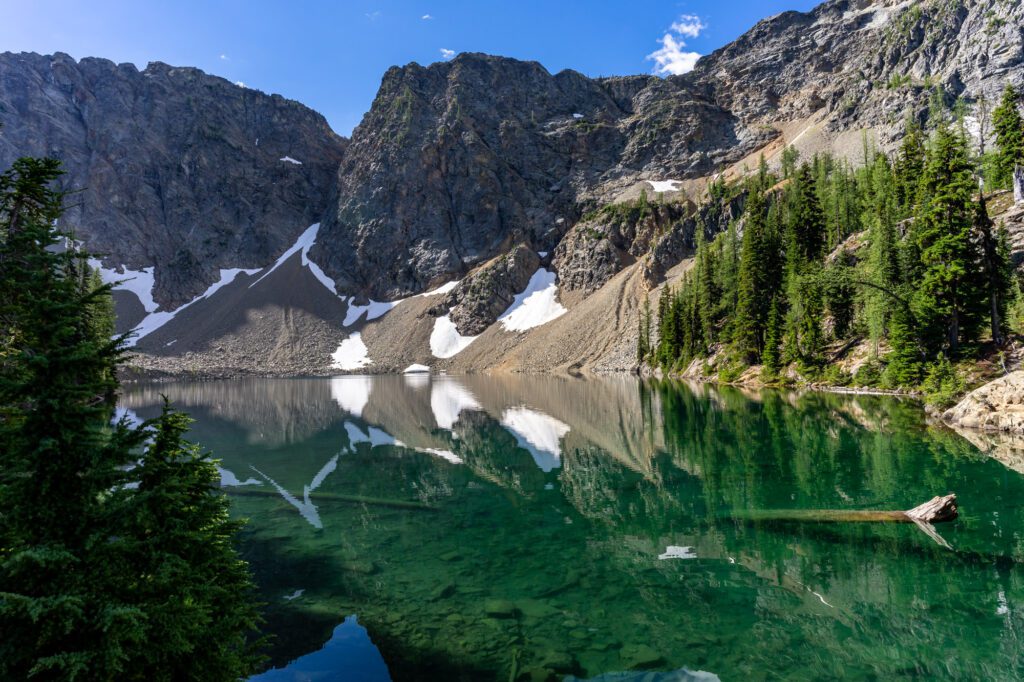
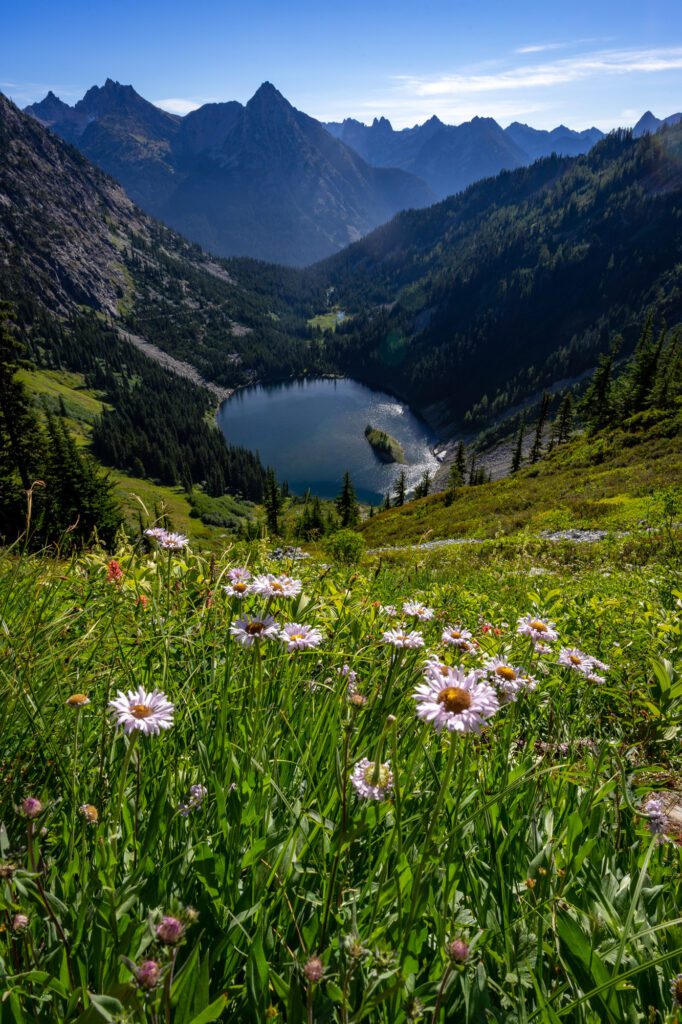
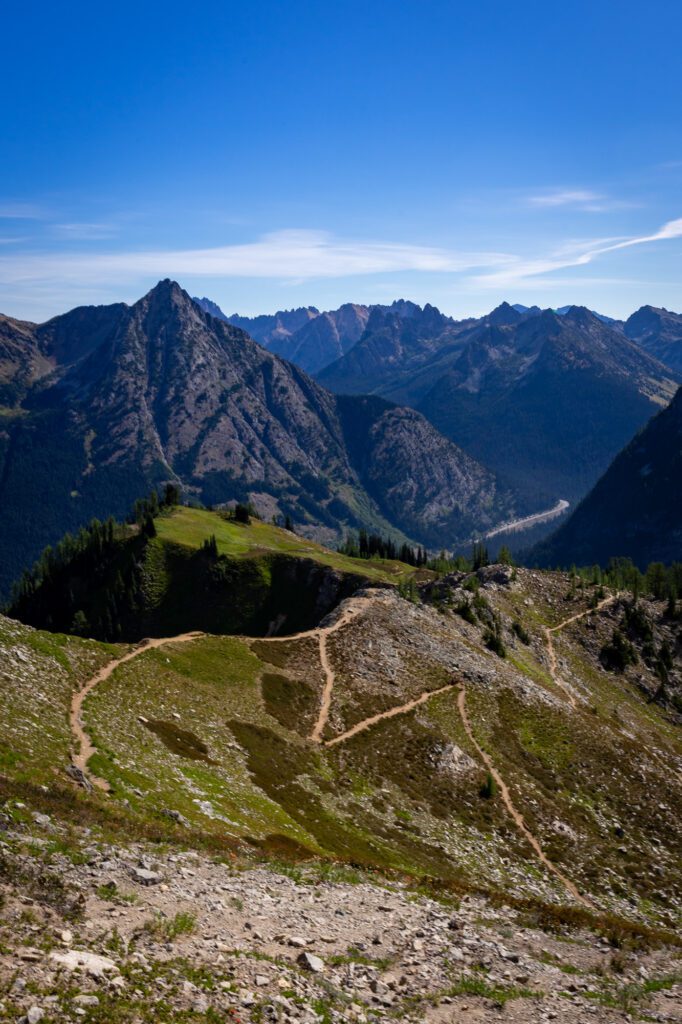
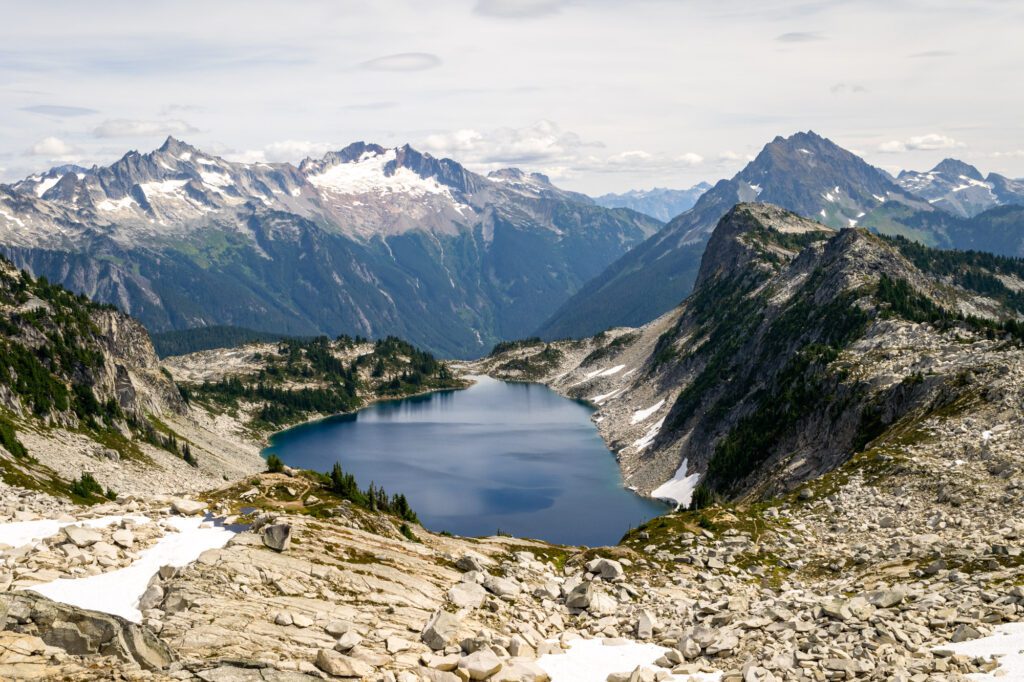
Drive the scenic byway end-to-end. Start in Sedro Wooley on the western edge of the park, and drive all the way through the park to Washington Pass Overlook. Along the way, stop at Diablo Lake, one of the many hikes in the park, and any other scenic pullouts that catch your eye.
Rent a Kayak or Canoe on Ross Lake. Ross Lake Resort is an oasis in the middle of Ross Lake that is only accessible by ferry. Head out there to rent a kayak or canoe and go exploring along the far shores of the lake, which are only accessible by overnight trip or boat.
Planning a Trip to North Cascades National Park? You won’t want to miss our detailed guides to visiting the North Cascades that are all based on our own personal experience exploring the park.
- All of our Favorite Things to Do in North Cascades National Park
- How to Plan a Perfect North Cascades National Park Itinerary (2-3 Days)
- Where to Stay near North Cascades National Park: A Complete Guide
- The Best Hikes in North Cascades National Park: A Helpful Hiking Guide
- Hiking the Heather-Maple Pass Trail: A Complete Trail Guide
Hood River & The Columbia River Gorge
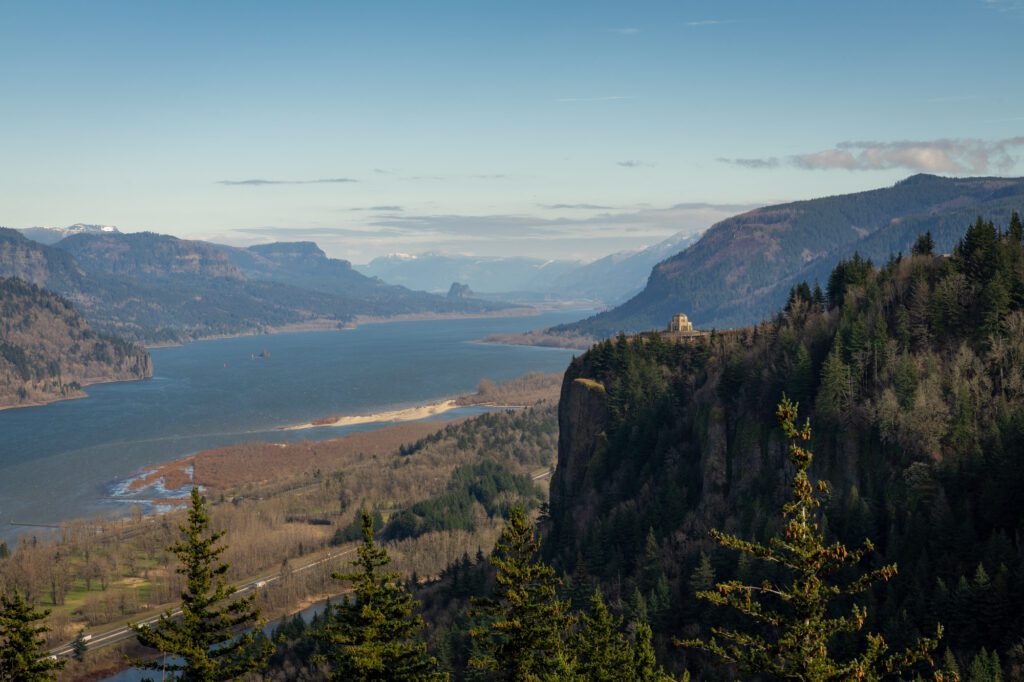
Distance / Drive Time from Seattle: 227 miles / 3 hours 30 minutes
Where to Stay: We have personally stayed at – and loved – the Ruby June Inn, which is a delightful little bed & breakfast up in White Salmon, Washington (about 15 minutes from Hood River).
Since we live in Portland, Oregon these days, Hood River and the Columbia River Gorge are essentially in our backyard, and we love it.
Let’s talk about these two areas separately.
The Columbia River is the border between Washington State and Oregon, and it’s the river that Lewis and Clark famously came up in their search for a route to the Pacific Ocean. The area is a truly spectacular combination of geologies, with the rock walls of the Gorge towering above you when you’re on the floor of the Gorge.
Which means two things. Great hiking, and, when you take into account how much rain this area gets, an incredible number of gorgeous waterfalls (particularly on the Oregon side).
The town of Hood River is in the Columbia River Gorge, and we think that it’s a special place because it sits at a crossroads of sorts.
To the east is the high desert (similar to Washington, Oregon gets very dry once you cross the Cascades). To the west is the waterfall corridor.
To the south is the fertile Hood River Valley and, towering over the area, Mount Hood.
The Cascades continue north, with Mount Adams and Mount St. Helens often visible from the Hood River area.
Oh, and if you’re into watersports, Hood River is world-famous for its windsurfing, and is a great place to go kayaking.
Hood River is the home base you’ll want to choose for exploring the area, and it offers a nice selection of places to eat and drink, along with some cool places to stay.
Things to Do in Hood River & The Columbia River Gorge
Here are our favorite things to do, see, eat, and drink in Hood River and the Gorge.
Waterfalls in the Gorge. There are way, way too many waterfalls in the Gorge to list here, so we’ll give you three of our favorites. Multnomah Falls, the tallest and most impressive of them all, is definitely worth a visit (and a walk up to the stone bridge). Wahclella Falls is at the end of an easy hike up a canyon, which we really enjoy. Horsetail and Ponytail Falls – specifically the latter – are worth the quick climb because you can walk behind the falls, which is a unique perspective.
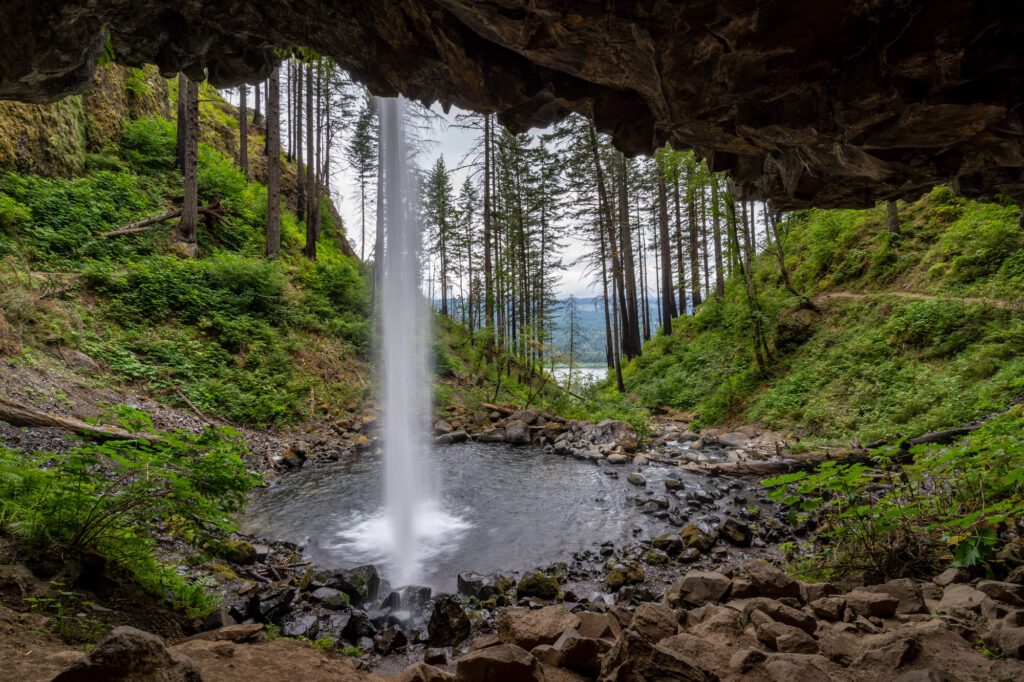
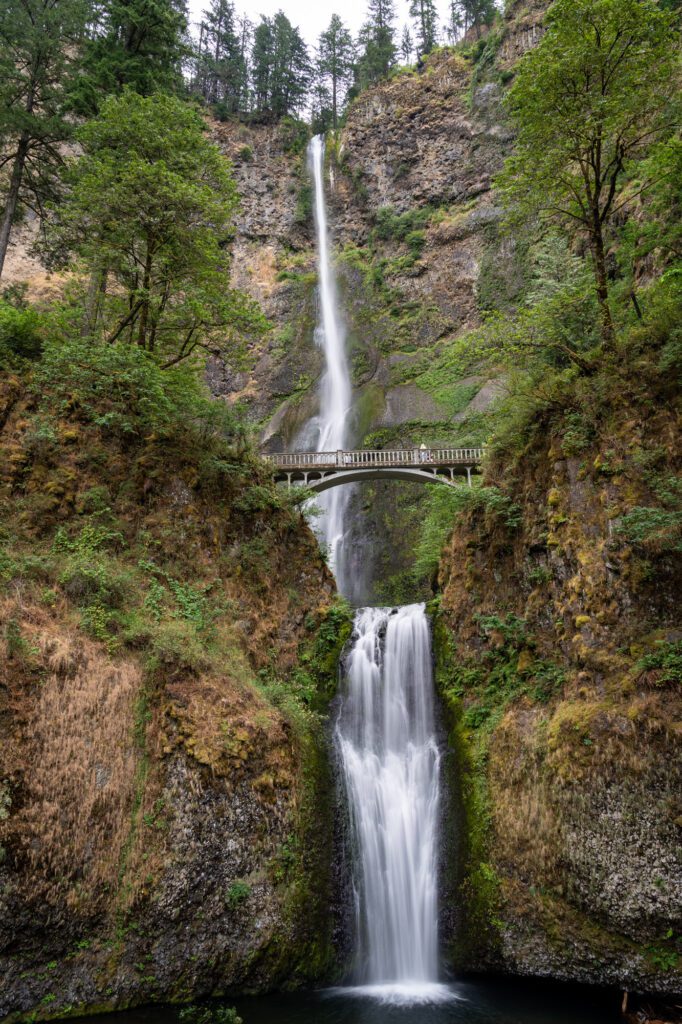
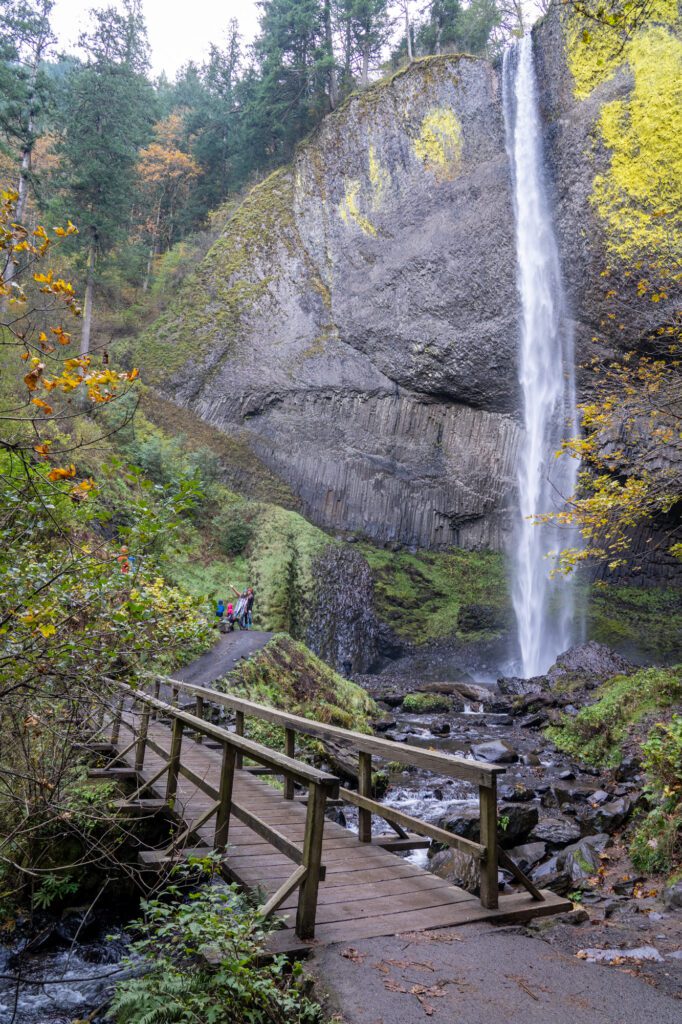
Get Out on the Water. Like we mentioned above, this is the place to go for watersports of all kinds. You can learn to kitesurf at Kite the Gorge, or rent a kayak and head out for an early morning paddle on the mighty Columbia River to channel your inner Lewis & Clark. There’s also the White Salmon River, which runs from mid to late summer, and is just a few minutes north of Hood River on the Washington side. Raft with Wet Planet Whitewater, who is right near the take out for the trip.
Exploring Downtown Hood River. There are some legitimately cool places to eat and drink in Hood River. If you’re into beer, there are a few good choices: pFriem, Double Mountain, and Full Sail all have taprooms in and around downtown. For cider, head to Crush Cider House. For wine, Hood River Common House. For food, there’s Lake Taco (self-explanatory), Grasslands BBQ (a food truck with excellent BBQ out near the water), and Kickstand Coffee for brunch and coffee.
Hiking on the Washington Side. While the Oregon side has the better waterfalls, there are some great views to be had on the Washington side of the Gorge. Hamilton Mountain is one of our favorite hikes in the Gorge, though nearby Dog Mountain is a close second in the spring and summer when it’s wildflower central (though it’s a TOUGH hike). Coyote Wall is another good option, and it’s the closest to Hood River.
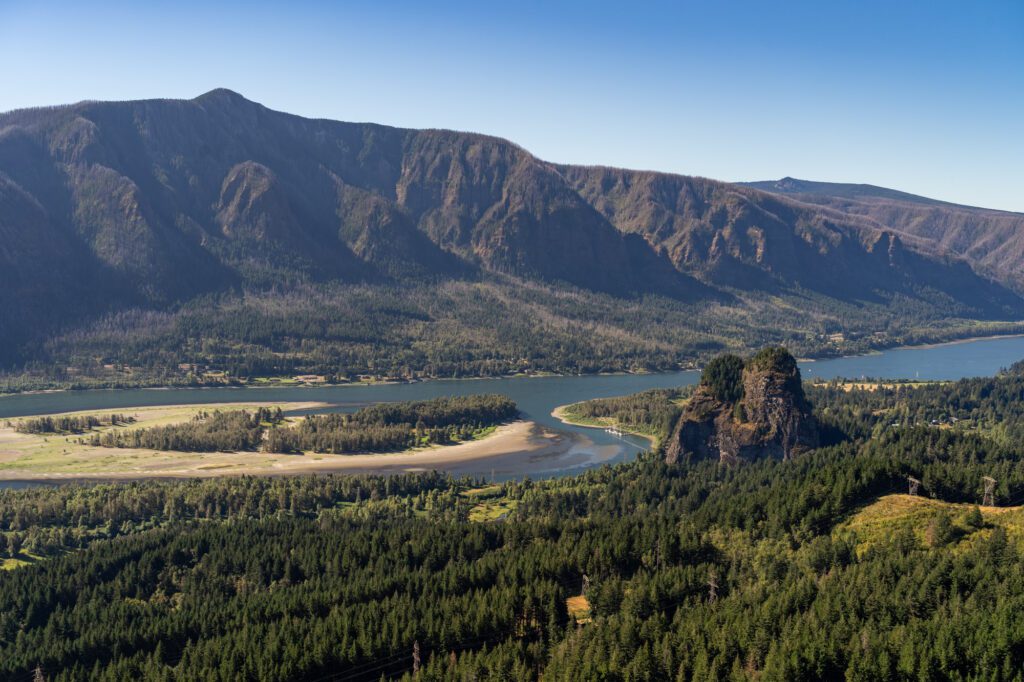
San Juan Island
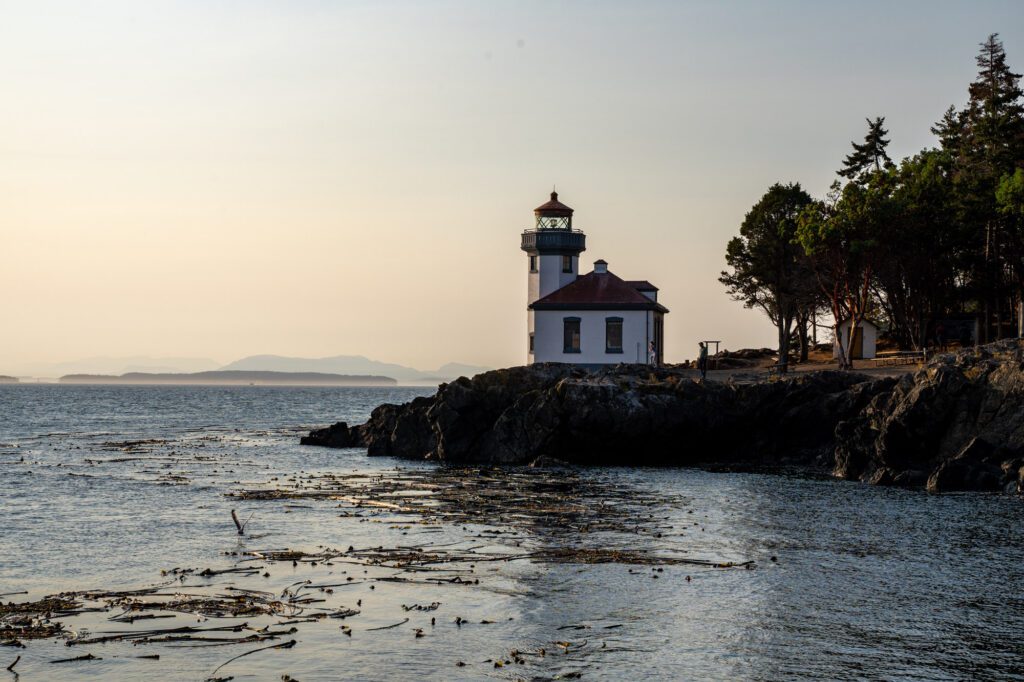
Distance / Drive Time from Seattle: 103 miles / 3 hours 30 minutes (includes ferry)
Where to Stay: In the town of Friday Harbor, you have tons of hotel options that are walkable to most of the restaurants, bars, and shops in town. Lakedale Resort is an 82-acre site just outside of town where you have the choice to stay in the luxurious lodge, the yurts, glamping tents, log cabins, or even a vintage Airstream trailer. There’s also a campsite and space for RVs. This is where we used to camp growing up, and we’ve stayed here on our last couple of trips.
The most-visited island in the San Juan Islands is home to the charming waterfront town of Friday Harbor, some of the best whale watching in the world if you’re looking for orca whales, and the pastoral center of the island means there’s a bunch of good local food and drinks on the island.
Growing up in Seattle, my family would go camping on San Juan Island every single summer, where we’d spend time wandering the cute downtown area that is Friday Harbor, Orca spotting at Lime Kiln State Park (the best place in the state to see them – they pass right off the coast!), and exploring the lavender farm on the island.
We think while you’re on San Juan Island – particularly if you have a whole weekend – you absolutely must get out on the water.
Preferably in a sea kayak – we went on a 6 hour paddle with Outdoor Odysseys and it was pretty spectacular – or on a whale watching tour.
The best time to see orcas (and other whales like humpbacks) is from June to September, and if you’re on the island during that time frame, you HAVE to do your best to see them.
You can also go to Lime Kiln State Park, which is known as one of the best places to see whales from land in the world.
Here are some other things to do on San Juan Island while you’re there for a weekend.
Things to Do on San Juan Island
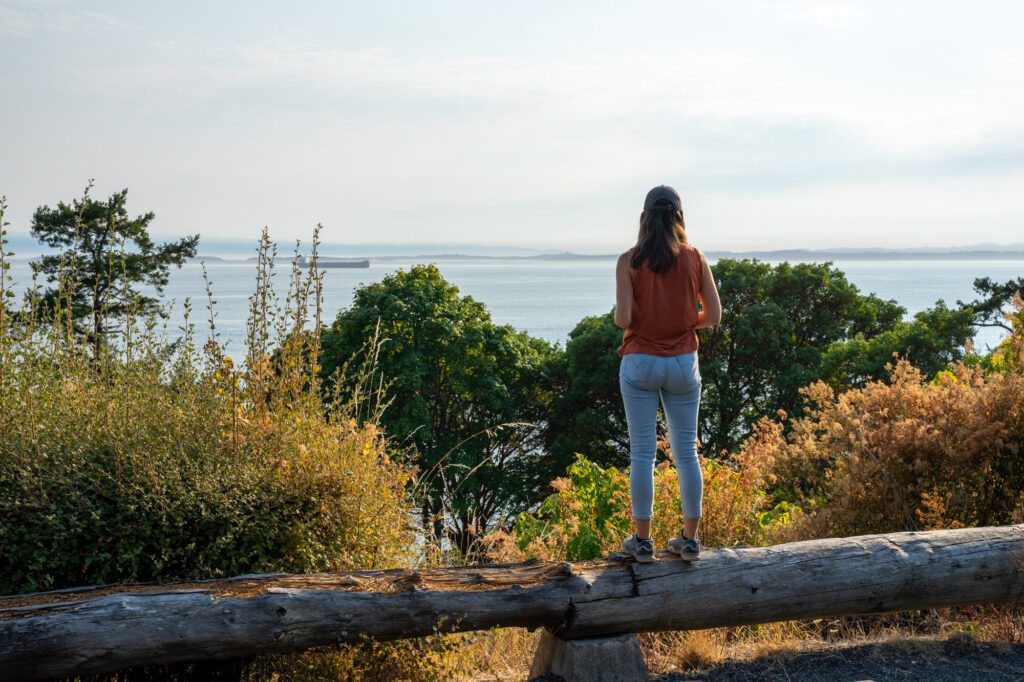
Here are some things you should do on San Juan Island.
Whale Watching for Free! Lime Kiln State Park on the western shore of San Juan Island is the place to see orcas from the comfort of dry land. And not just orcas but pods of humpback and minke whales too. The best time is June through September. I have very fond memories of many summer days spent sitting on the rocks, talking to rangers, and keeping my eyes peeled. And we saw orcas almost every time!
Sea Kayaking around the San Juan Islands is superb. Beginners and seasoned kayakers alike will find plenty of adventure on the open water. Whether you just want a couple of hours on the water or are craving a multi-day trip, the friendly folks at Outdoor Odysseys have you covered.
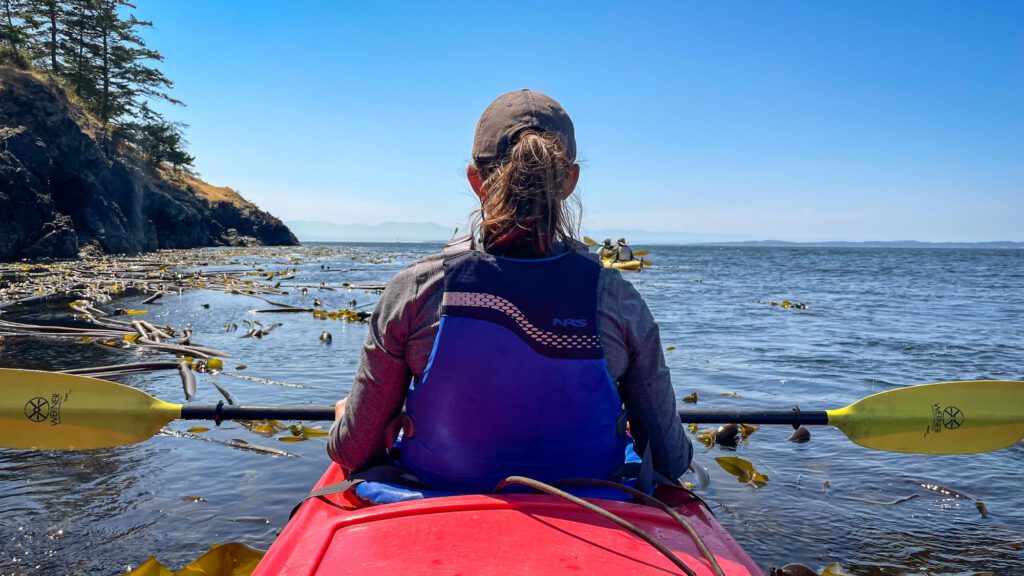
Lavender. Pelindaba Lavender Farm is a lovely place to visit, particularly in July and August when the fields are in full bloom. At other times of the year, there is always the store, distillery and exhibits to explore, but you won’t see the vast fields of purple.
The Farmers Market. Located on Nichols Street in Friday Harbor, the Saturday Farmers Market is a smorgasbord of fresh local produce in a relaxed atmosphere accompanied by music from guest musicians.
The Bars. San Juan Island Brewing Co. in Friday Harbor produces superb craft ales and lagers and has a bar and restaurant where you can sample them. Being a brewpub doesn’t stop them from serving wine and cider too, so if you’re not a beer fan (or you can’t drink it, like me), don’t let that stop you. Madrone Cellars is right in downtown Friday Harbor and makes amazing cider and wine, serving it up in a charming and tiny tasting room. We ended up doing a cider flight, and walked away with a bottle of their lavender black currant cider.
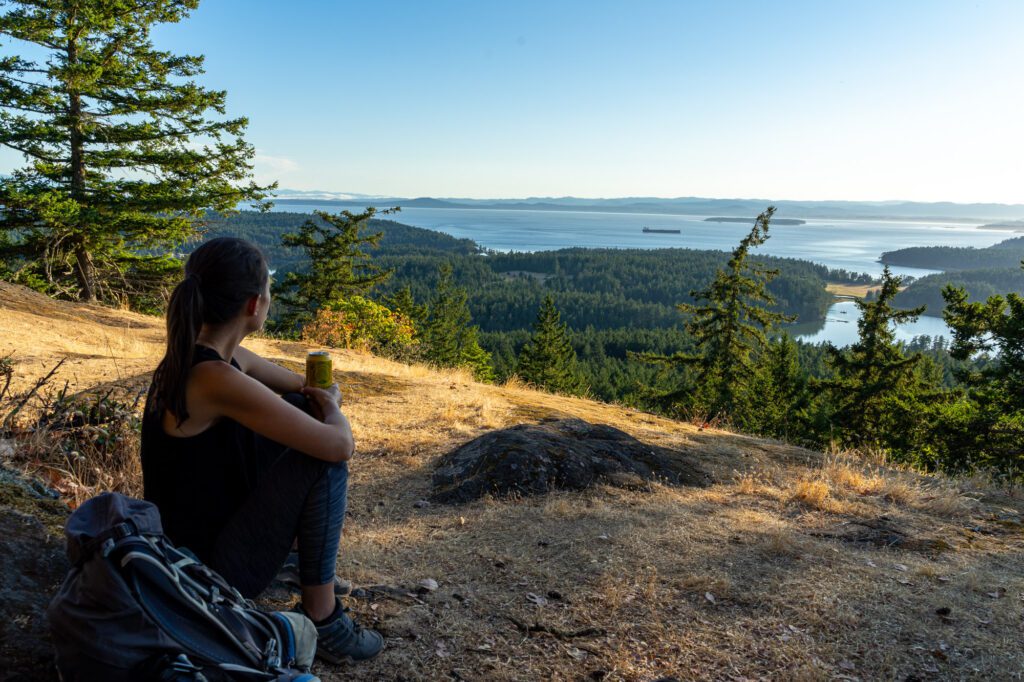
Mount Hood
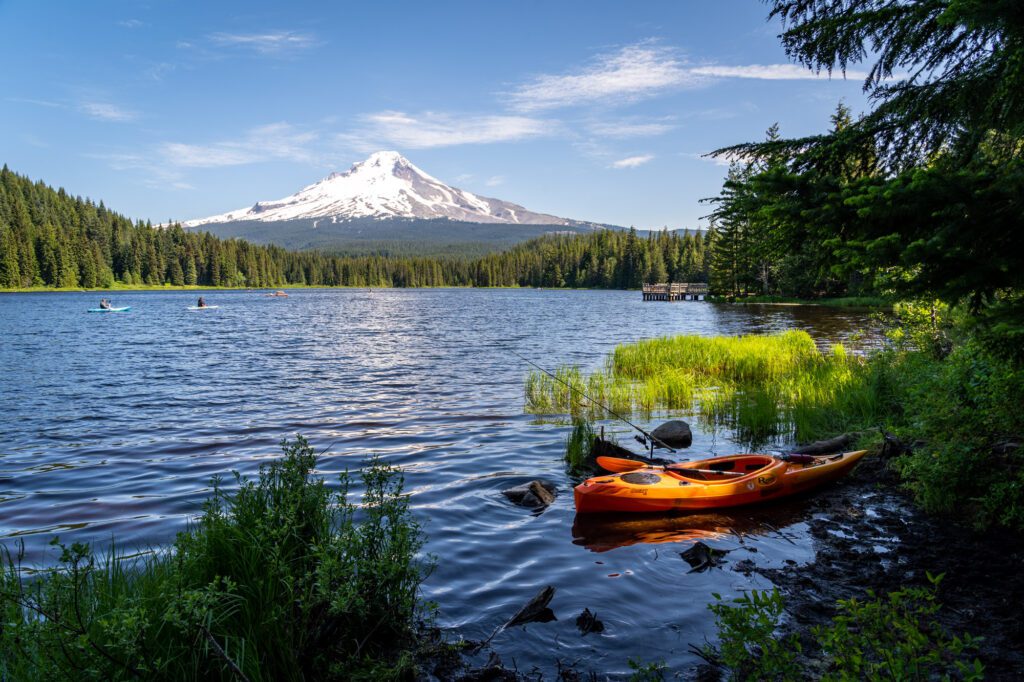
Distance / Drive Time from Seattle: 222 miles / 3 hours 45 minutes
Where to Stay at Mount Hood: If you’re up for camping, run, don’t walk to snag a site at Trillium Lake Campground. It’s competitive, so you’ll need to book well in advance, but it’s 100% worth it. If you’re not into camping, the coolest option is definitely the historic and wonderfully rustic Timberline Lodge (which is worth a visit even if you don’t stay there), but it’s also the most expensive. The Best Western Mount Hood Inn is less sexy, but more affordable (and walkable to both Skibowl and the trailhead for Mirror Lake / Tom, Dick, and Harry Mountain).
Mount Hood is one of our favorite weekend getaways from Portland, in all seasons, and it’s within striking distance for Seattle too at just under four hours away by car (without traffic).
Similar to Rainier in Seattle, a good weather day in Portland is often measured with “can you see Hood today?” The pointy, often snowy peak is a key element of the Portland skyline.
Whether it’s summer and you’re in search of those sweet, sweet mountain meadows full of wildflowers, or it’s the winter and you want to spend time getting cozy in a cabin between days on the slopes, it’s a fantastic place to go.
Plus, it’s on National Forest land, so all the hiking trails are dog-friendly!
Mount Hood is big, and the specific area you’ll want to base yourself is Government Camp (or nearby), which is on the south side of the mountain. Unfortunately, that does mean that it’s a bit further from Seattle (the distance and time above reflects the drive to Government Camp).
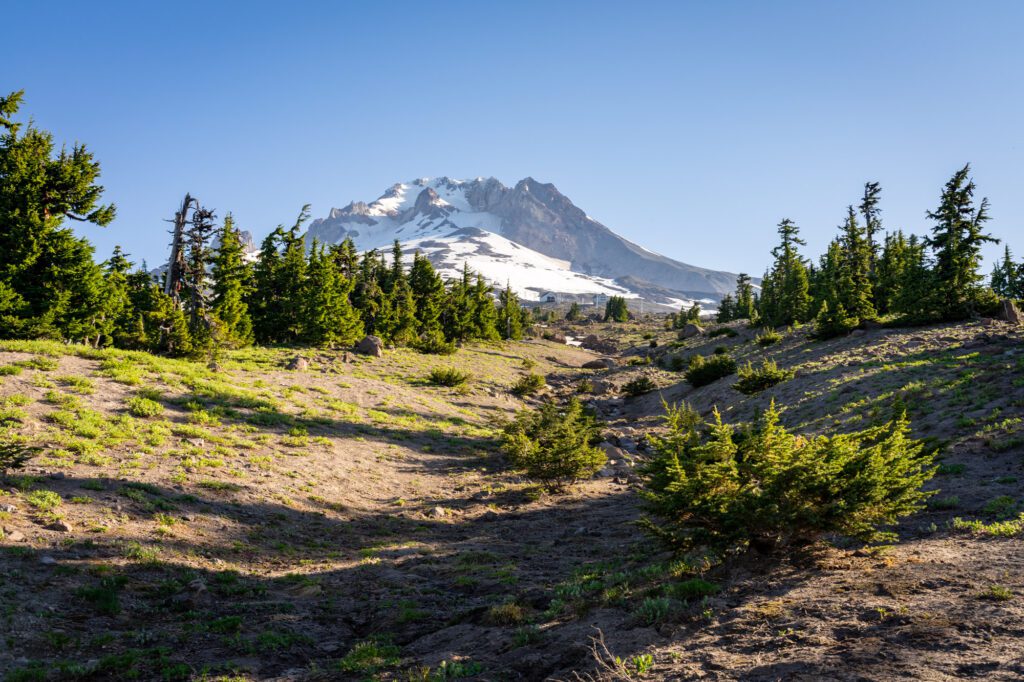
Things to Do at Mount Hood
You’ll notice that most of these revolve around hiking and summer activities, and that’s because we think it’s a better summer destination, but we’re both biased (we are hikers more than we are skiers).
Trillium Lake. We’ve spent many summer weekends at Trillium Lake (which is a great campground, too), and it’s the postcard view of Mount Hood you’re looking for. At the south end of the lake, you’ll have a mostly unobstructed view of Hood’s snowy peak towering over the valley. If you’re lucky, there will also be a reflection of the peak in the surface of the lake (especially in the early morning around sunrise). This is also a great place to bring kayaks or stand up paddleboards for a day of fun on the water.
Tamanawas Falls. It’s a little bit of a trek from Government Camp, but this is another excellent hike. It’s a relatively easy three miles (round trip) out to a pretty spectacular waterfall, and it’s both dog-friendly and fairly accessible for most hikers. Read our trail guide for the Tamanawas Falls trail for more detail!
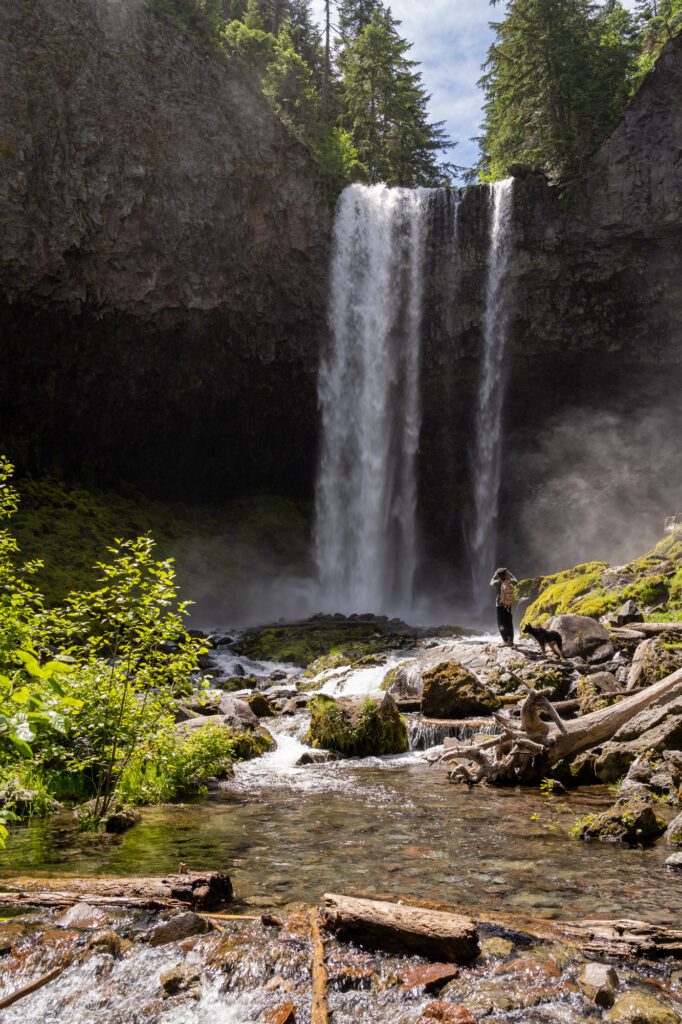
Ramona Falls. A slightly different waterfall – equally impressive, though – that is less accessible due to a river crossing that is treacherous in the spring and early summer when the water is high from the snowmelt.
Epic Hikes. There are a bunch of big hikes with incredible views on the south side of Mount Hood, but our favorite is the McNeil Point Trail. True, it’s a brutal hike (especially on a hot summer day), but you’ll end up so close to Mount Hood that you can essentially reach out and touch it. Again, it’s a very, very tough hike. A good alternative would be the Tom, Dick, and Harry Mountain trail, which takes you up to a peak across the valley from Hood, which means an unbeatable view.
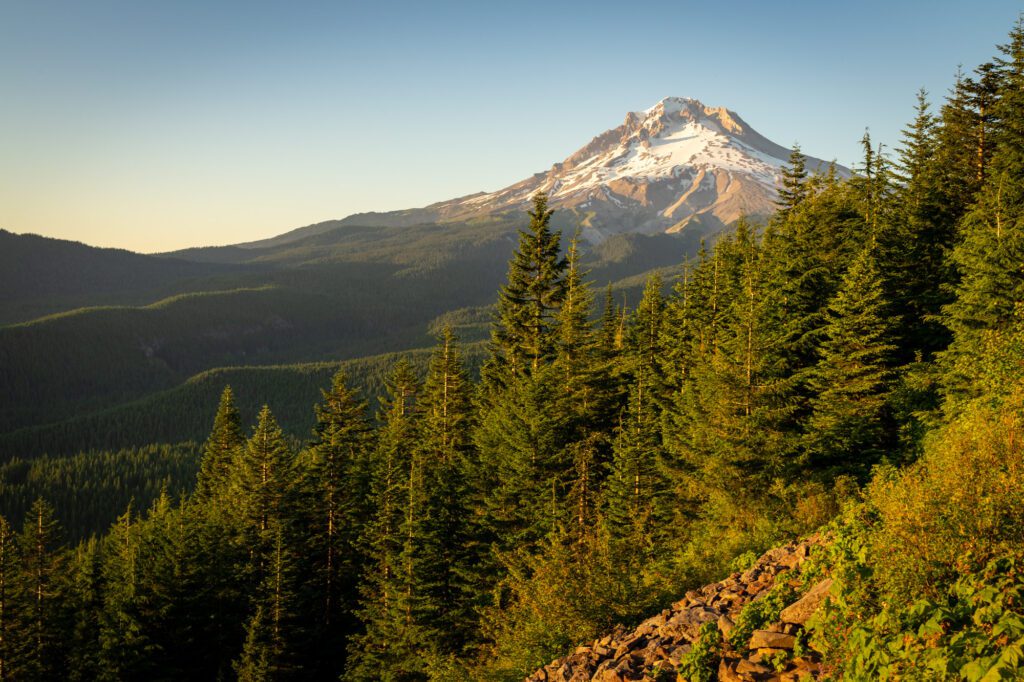
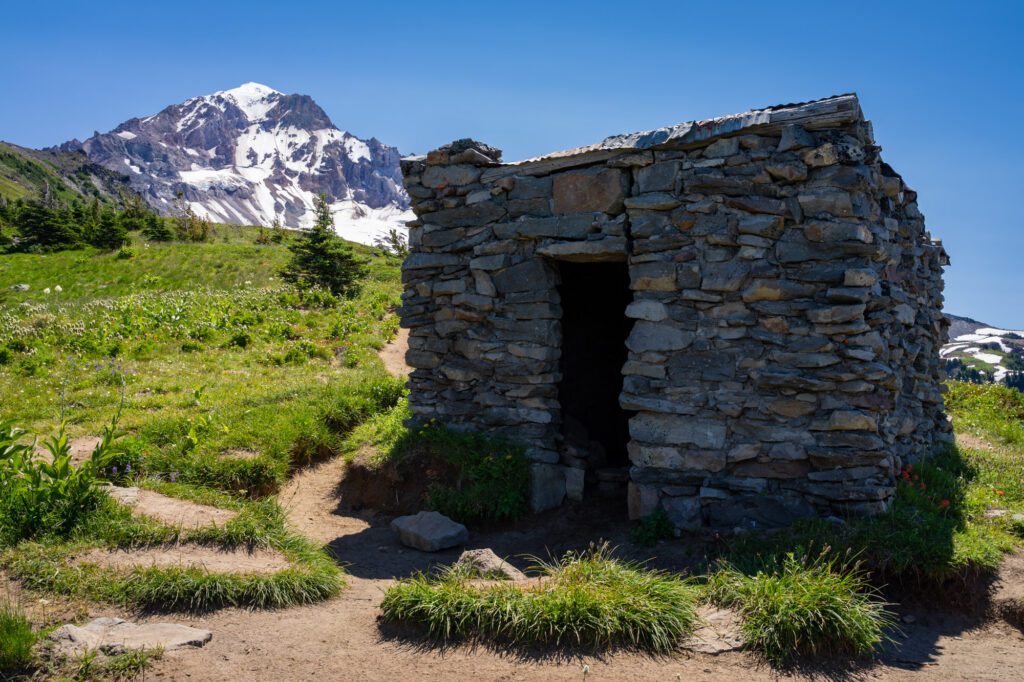
Leavenworth
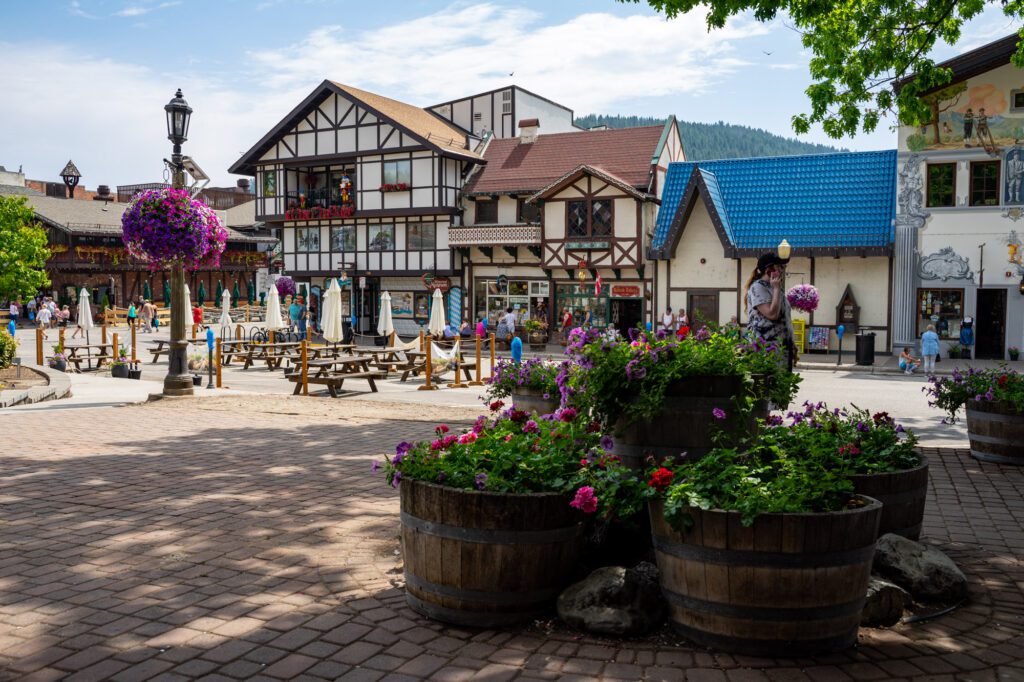
Distance / Drive Time from Seattle: 135 miles / 2 hours 15 minutes
Where to Stay: Leavenworth has some beautiful places to stay, and we’d generally recommend staying somewhere that is walking distance to town (with parking, if possible). We stayed at Loge Riverside on our latest three day weekend in town, and would highly recommend it. The other Loge location in Leavenworth is right in the heart of downtown, and it’s more of a hotel / hostel style. If you’re looking to really immerse yourself in the whole Bavarian schtick, check out the Bavarian Lodge.
Now, normally, we’re not super into the whole “themed tourist town” idea. But, for whatever reason, we love Leavenworth, a Bavarian-themed town that sits in the eastern foothills of the Cascades.
How, exactly, did a Bavarian-themed town spring up in the foothills of the Cascades, you ask? It’s actually an interesting story.
Basically, it was a timber town until that industry dried up, and they decided that their best bet was tourism.
Two Seattle businessmen came up with the idea of a Bavarian getaway, and they started slowly and systematically transforming the town over decades to resemble a Bavarian mountain town, which is what you see today.
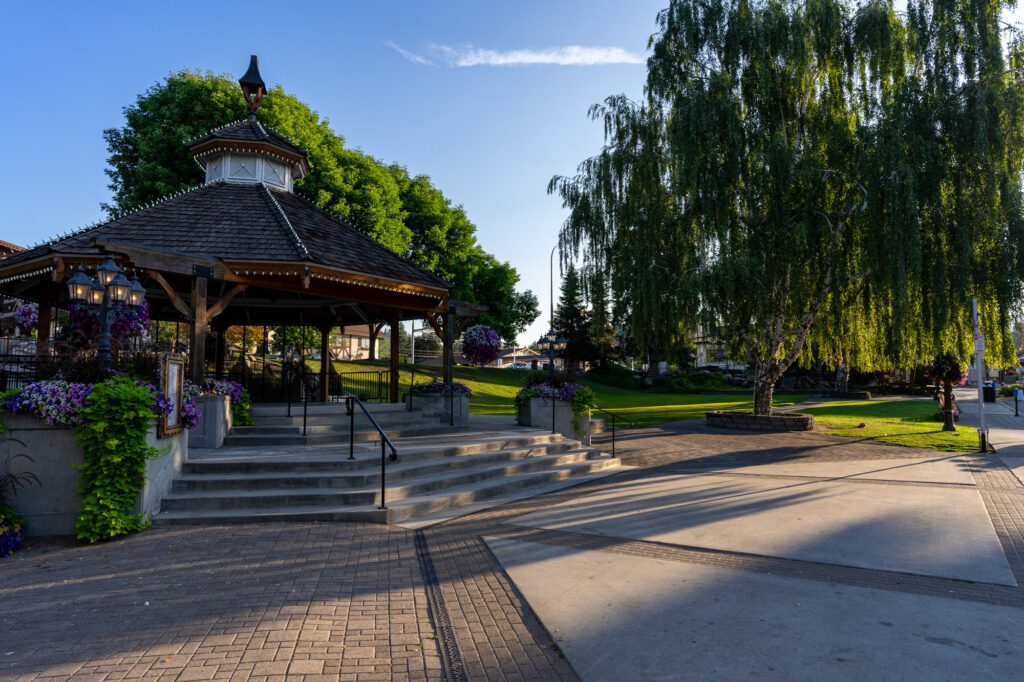
Unlike other themed towns (looking at you Solvang), we actually really enjoy Leavenworth. Not only is the theme fun and well done, but it’s about as good a home base for outdoor activities as you could possibly dream up (outside of the national parks, I suppose).
Between the food and drink options in town, the shopping, and the activities in the area surrounding Leavenworth, it’s an excellent destination for a weekend away from Seattle.
We’ve found ourselves in Leavenworth multiple times over the past few years, and always seem to be looking to make it out there again soon.
Things to Do in Leavenworth
Here are some of our favorite things to do in Leavenworth.
Colchuck Lake is a not-so-hidden gem tucked away in the Alpine Lakes Wilderness in the eastern Cascade foothills. And it’s one of our favorite hikes in the world. The hike from the trailhead is a tough one, climbing about 2,500 feet over 4.5 miles (one way), but the sight of the stunning blue alpine lake will make the juice worth the squeeze in the end. The downside is that it’s an incredibly popular hike, and on weekend mornings, the parking lot is legitimately full by 6:30 am. GET THERE EARLY. It’s worth the early wakeup call.
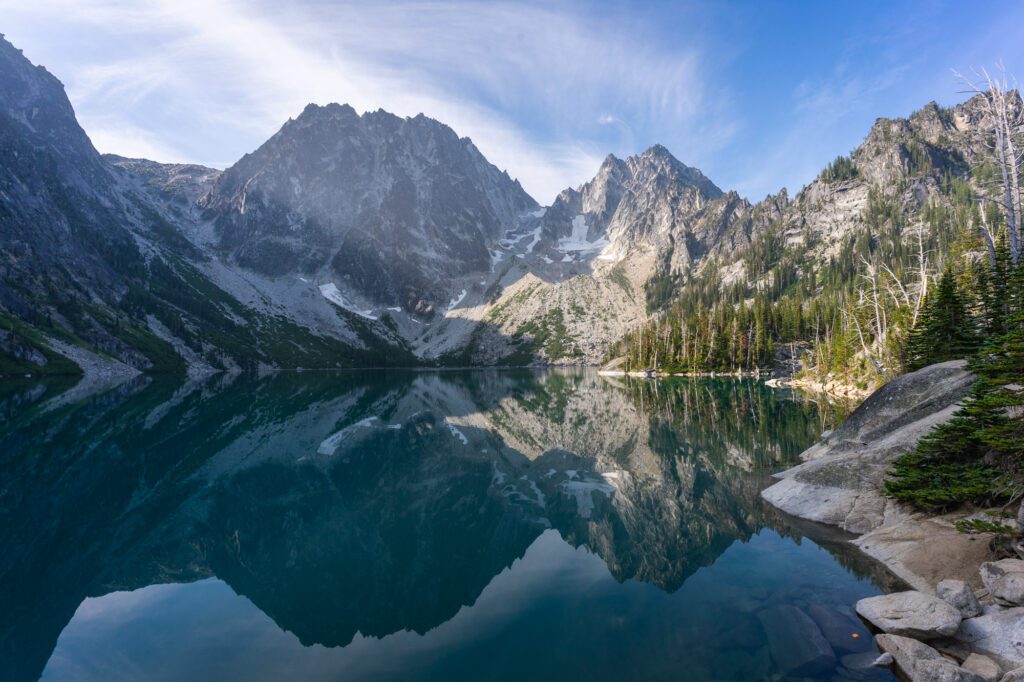
Oktoberfest. Pretend to be Bavarian! Leavenworth was a dying logging town until it reinvented itself in the 1960s as a Bavarian village. They have their own Oktoberfest celebration in October, which is a lot of fun, even if you aren’t a fan of beer. There’s plenty of cultural events, free-flowing wine and cider, and picturesque fall foliage that makes it a VERY pleasant place to be. Book early, because everything fills up fast.
Explore Downtown Leavenworth. There are some legitimately great places to eat, drink, and shop in downtown Leavenworth. For beer, go to Icicle Brewing. For cider, go to either Leavenworth Cider House or Bushel & Bee (the latter also has a great craft beer selection). For food, we like Yodelin Broth (for healthy-ish fare with fresh ingredients), Whistlepunk Ice Cream (self-explanatory), and Leavenworth Sausage Garten (also self-explanatory). For shopping, we love Posy Handpicked Goods, who curate work from local artists and sell them in their shop.
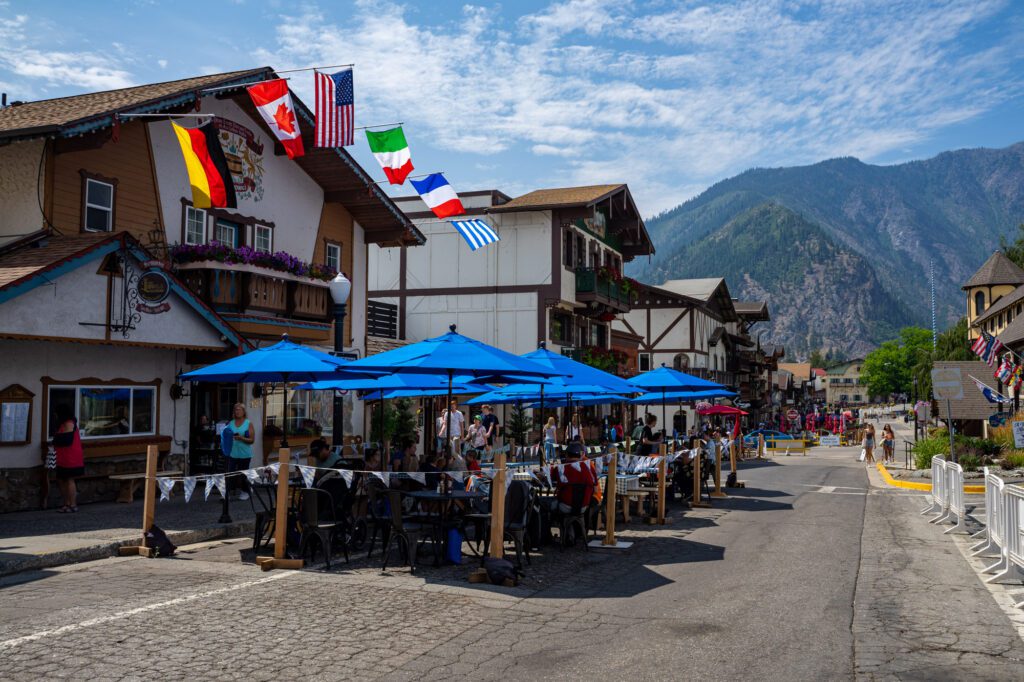
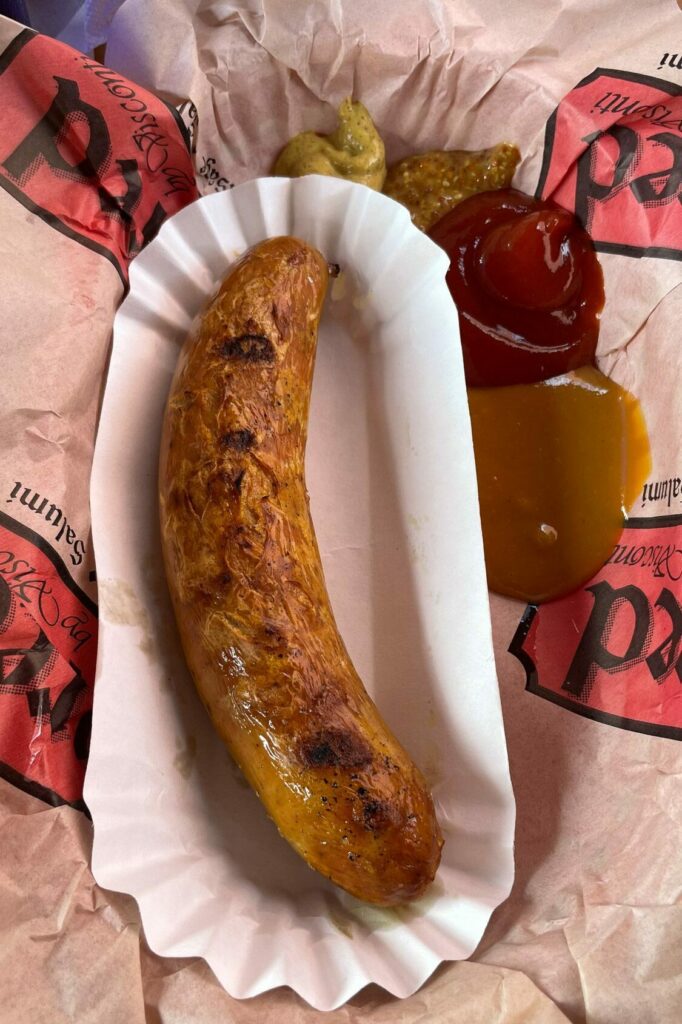
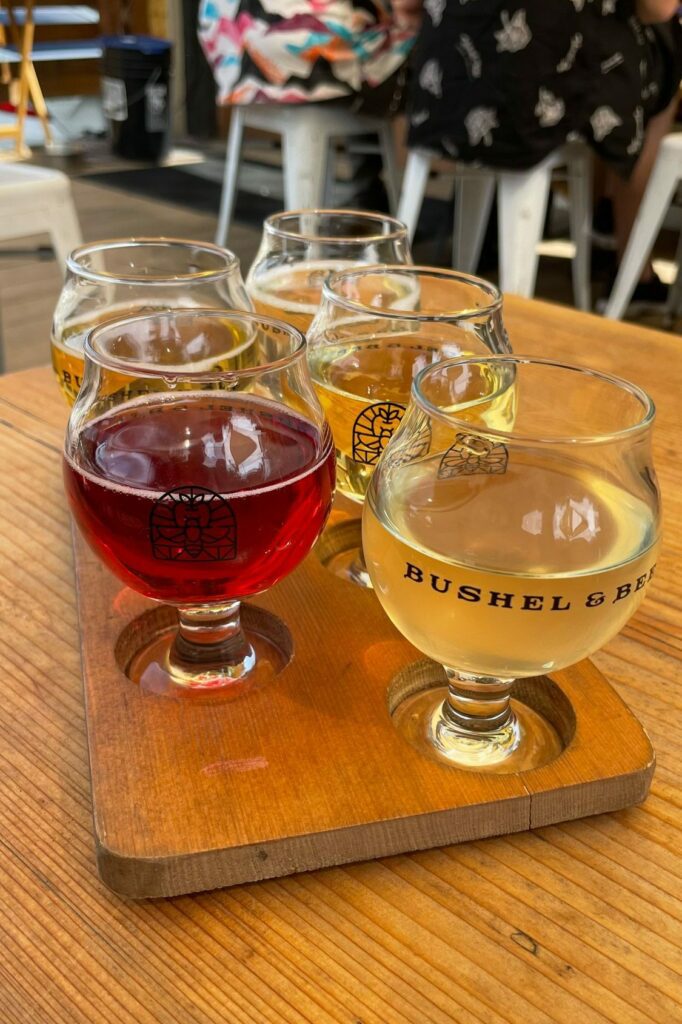
The Village of Lights (Christmastime in Leavenworth). Between Thanksgiving and February, Leavenworth really leans into the whole German Christmas market idea and transforms into a winter wonderland. In particular, the first three weekends in December are the time to be there, when there’s a Christmas bazaar inspired by the famous German Christmas Markets, and a full schedule of performers.
Rafting the Wenatchee River. Probably the most accessible whitewater rafting trip from the Seattle area, this is an excellent activity between Memorial Day and the end of June (or mid-July, depending on the year) when the water is high. Matt used to work for a rafting company that does the Wenatchee (in marketing, not as a guide) and he’s been on this trip many times (and somehow ends up in the water every time – balance is not his strong suit). There are half day trips and full day trips – the half day trip covers the best stretch of river, so if you’re not sure you’re in for a whole day on the river, choose that one. Go with Alpine Adventures.
Floating the Icicle River. A slightly different speed from rafting, this is a fun, family-friendly experience. Or a debaucherous bachelor party experience if you do it with friends and coolers full of beer and cider. It’s an easy float that takes a couple of hours. Go with one of the many companies who will shuttle you to the place where you get into the river, then float down to where your car is parked for a nice afternoon. Bring sunscreen.
Portland, Oregon
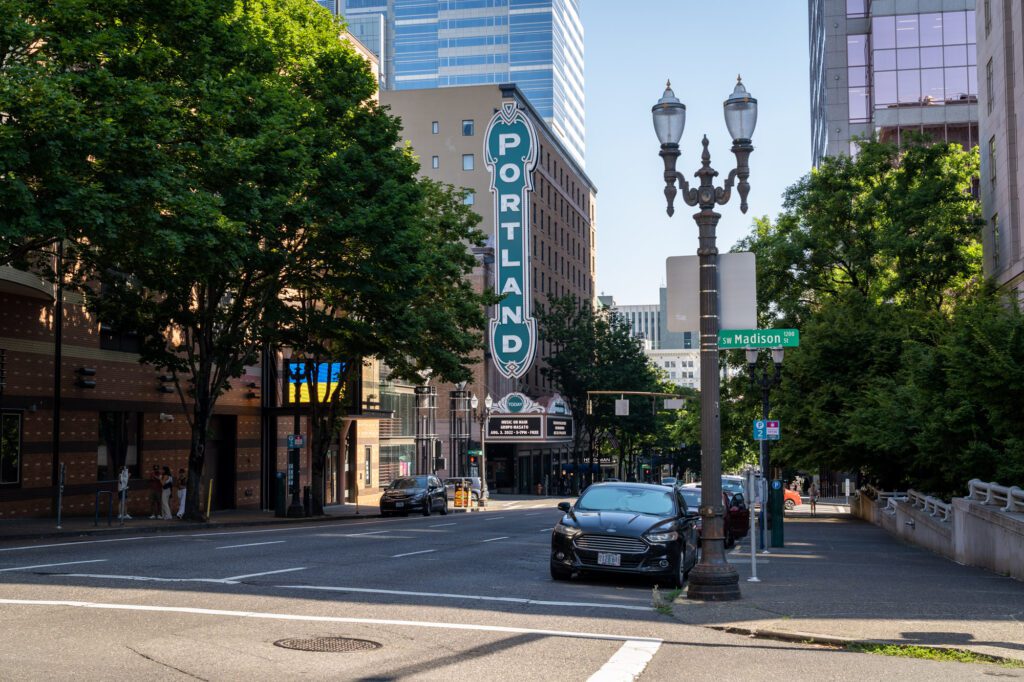
Distance / Drive Time from Seattle: 174 miles / 2 hours 45 minutes
Where to Stay in Portland: If you’ve only got a weekend, you’re probably going to want to stay within the downtown core, which includes Downtown Portland, the Pearl District, and the Northwest District. In terms of where, specifically, to stay, we’d go with either the Ace Hotel (we’ve stayed at the Ace in Seattle and in New York City, and very much enjoyed both) or the Canopy by Hilton in the Pearl District. We also stayed at the Jupiter NEXT as a bit of a splurge on our last trip before officially moving, and we really enjoyed it.
I mean, we live in Portland now, so we kind of have to include it here, don’t we?
Portland is one of our favorite cities in the world (which is why we decided to end up here), and it has an incredibly underrated food scene.
We’re going to go out on a limb here and say it’s better than Seattle AND San Francisco (but it kind of depends on what you’re looking for, I suppose).
We like Portland for similar reasons to Seattle – its proximity to places like the Columbia River Gorge, Mount Hood, and the coast – but we actually enjoy the green spaces in Portland much more than Seattle (Discovery Park is great, but there are three versions of that park within Portland).
It’s also a very easy place to get to from Seattle. You can drive within a few hours, or if you want to be car-free or you want to save money on gas (gas prices are currently wild), you can hop on Amtrak from Seattle’s Union Station and be there in about four hours.
It’s a place that, unlike other bigger cities that have more established tourist attractions, the draw here is the small business culture, green spaces, and the best independent bookstore in the world.
Things to Do in Portland
Here are some of our favorite things to do in Portland. However, if you want a deeper dive, you should head over to our Portland itinerary, which has far more detail.
Smell the Roses at the International Rose Test Garden. Portland, known as the “City of Roses” (which I recently learned was essentially a marketing ploy, similar to Leavenworth’s Bavarian theme), is full of roses. Even in our backyard we have multiple rose bushes with multiple varieties (that our dog, Lupine, got tangled up in within a week of adopting her). Well, the International Rose Test Garden has 10,000 roses, and a cool map that shows you all the different varieties that live there. It’s a must-visit for us, and it’s a short journey up the hill from downtown.
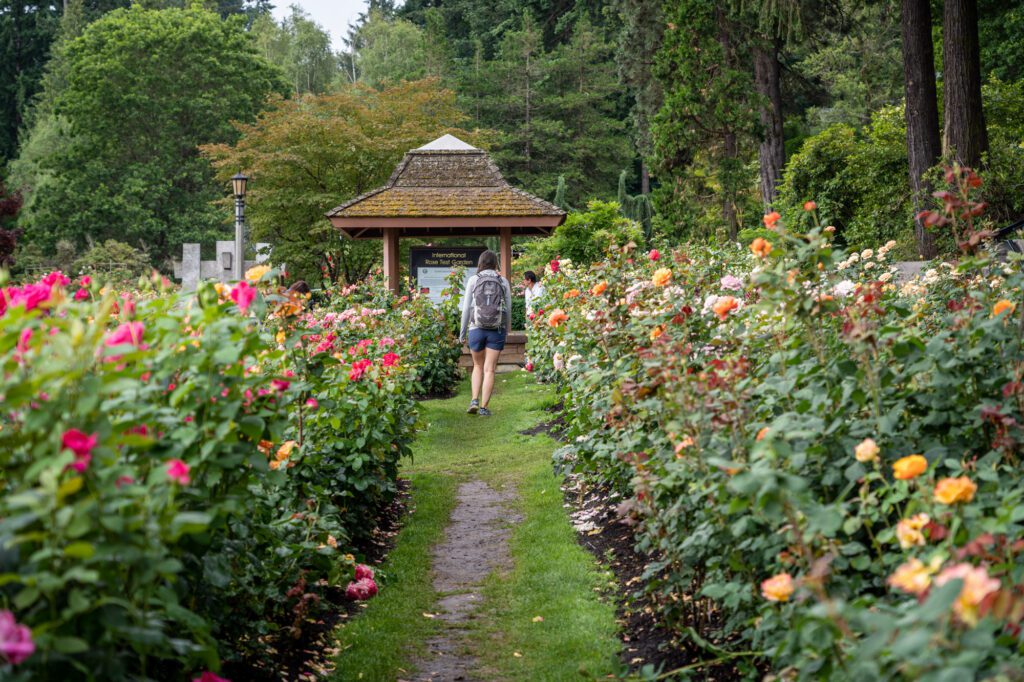
Browse the Shelves at Powell’s Books. Powell’s Books is an absolutely massive independent bookstore in Portland. The downtown location – which is the one you should hit – is the best bookstore we’ve ever been to. Multiple floors, including big sections dedicated to graphic novels, board games, and Pacific Northwest, and a stellar staff recommendations section.
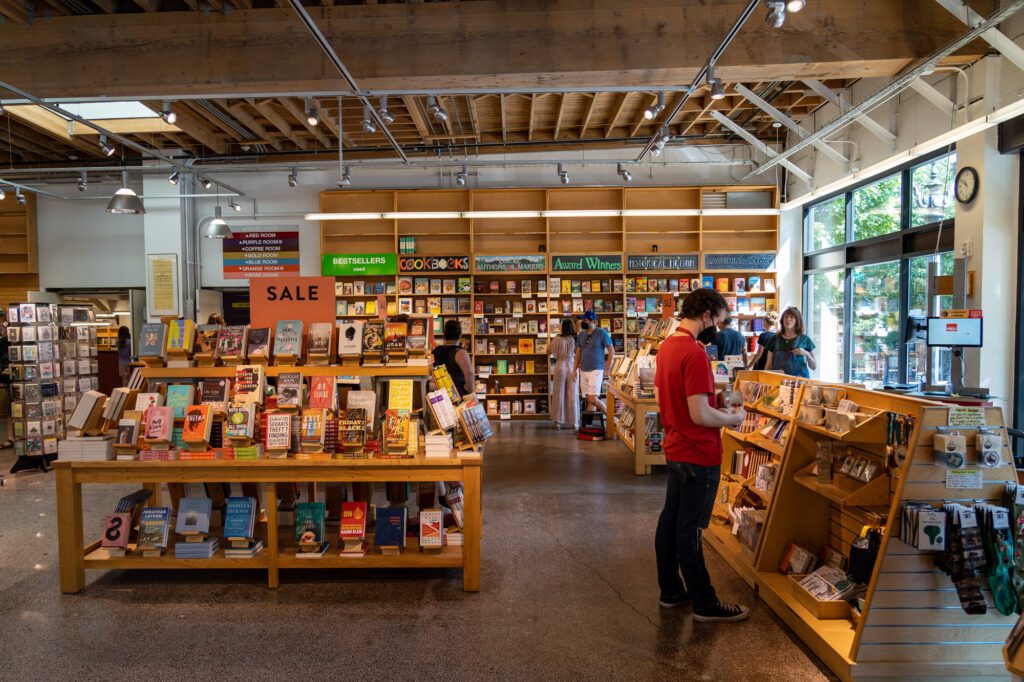
Go on an Urban Hike to Pittock Mansion. Pittock Mansion sits up in the hills to the west of Portland, and was built in the early 1900’s by one of the early developers in Portland. You can certainly drive, sure, but even better is to tackle the 5 mile trail that leaves from Lower Macleay Trailhead (here on Google Maps), passes the Witch’s Castle (which is really just an old park building), and climbs through the ferny forest to the mansion, which has a commanding view of Portland and, if you’re lucky, Mount Hood’s snowy peak. Here’s our trail guide for the hike to Pittock Mansion.
Eat Your Heart Out. Portland is an incredible food city, and as we mentioned above, is a better foodie destination than both Seattle and San Francisco (in our opinions, anyway). Here are some of our favorites (note that this is by no means a comprehensive list): Fried Egg I’m in Love (breakfast sandwiches that are out of this world), DesiPDX and Masala Lab (inventive Indian food with fresh PNW ingredients), Lovely’s Fifty-Fifty (creatively topped pizzas), Kate’s Ice Cream (Gluten and Dairy free plant-based ice cream), Kann (Haitian food from a Top Chef competitor)… the list goes on!
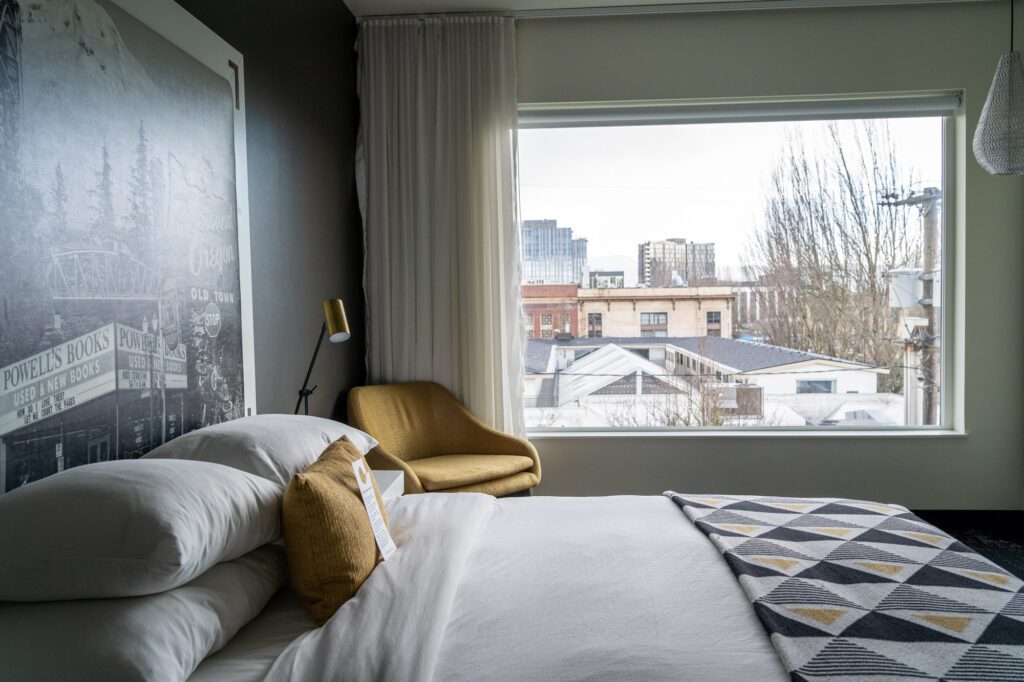
It’s a beautiful, modern boutique hotel on the east side of the river, but close enough to just about everything to make a good home base. Plus, comfy beds, friendly staff, and free (good) coffee in the morning!
We’ve got a whole detailed guide to where to stay in Portland, where you’ll find far more detail than we’ve included here.
Vancouver, B.C.
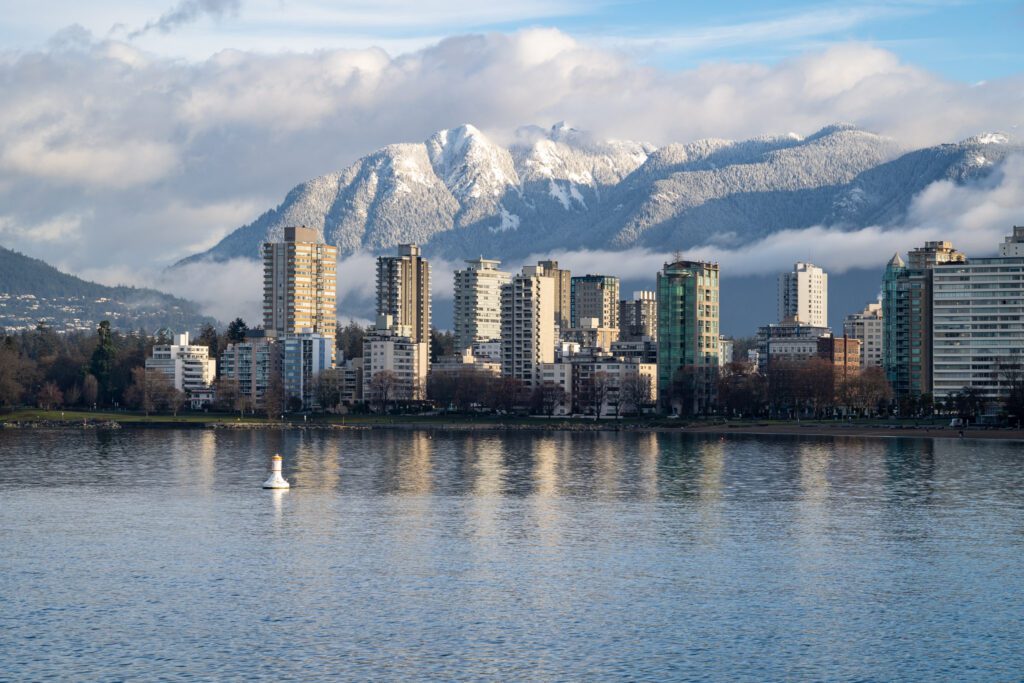
Distance / Drive Time from Seattle: 145 miles / 3 hours (not including border crossing time)
Where to Stay in Vancouver: We probably wouldn’t stay right smack dab in the middle of the city, we’d opt for one of the neighborhoods adjacent to the central downtown core like Yaletown, which is just southeast of downtown and is walkable to just about everything, or the West End, which is on the other side of downtown and is home to Stanley Park. Once again, we have a much more in-depth guide to where to stay in Vancouver, which has more detail on each of the areas we’d recommend, including pros and cons and specific places that caught our eye.
If you cross over the northern border of the United States into British Columbia, Canada, you’ll find a land that is… pretty similar to Washington, if we’re being honest. Like Seattle, Vancouver is a gorgeous city, set right on the water with the mountains serving as a backdrop to the city’s skyline.
We’ve fallen more in love with Vancouver over the past year or so, which has taken us up to British Columbia’s biggest city twice for a good amount of time on each trip.
Before that, we had been multiple times, but had basically only spent time in the downtown core.
We’re here to tell you that the real magic in Vancouver happens outside of that core in places like Kitsilano and Mount Pleasant, where you have streets lined with independent shops and restaurants.
Vancouver is worth a couple of days (here’s our guide to a weekend in Vancouver), and more if you want to do some day trips to places nearby.
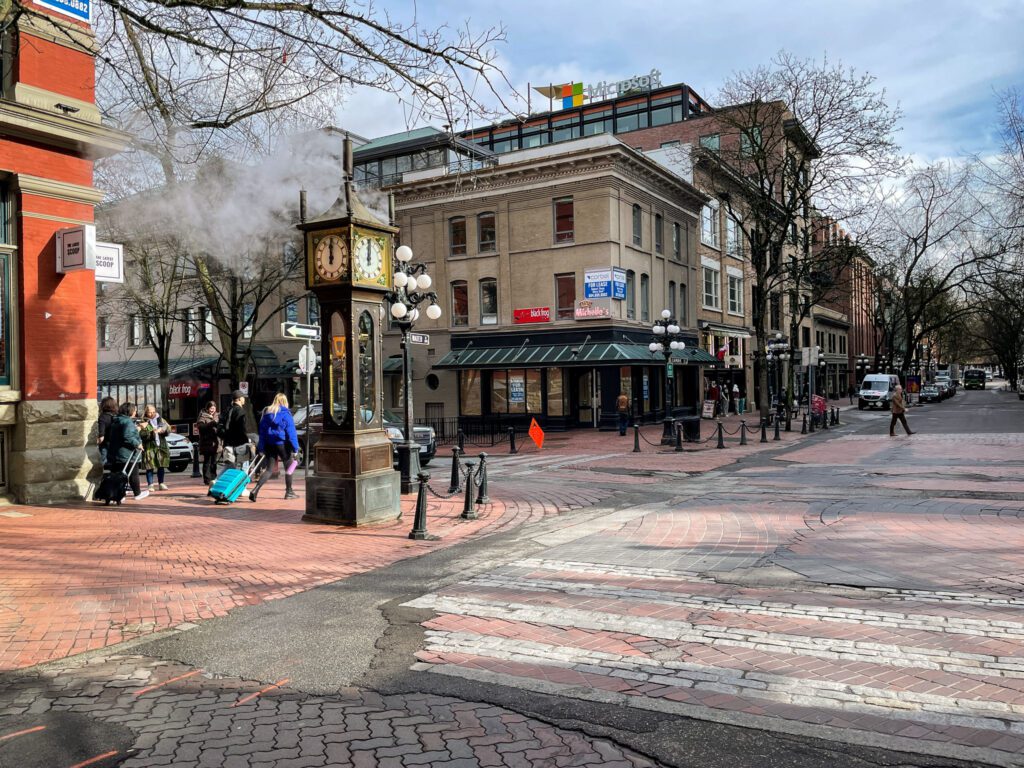
Things to Do in Vancouver
Here are some of our favorite things to do in Vancouver.
Granville Island Public Market. A (covered) farmers market right on the water? Sign us up! It’s part produce, part ready-to-eat food and drinks. One of our favorite things to do in Vancouver is taking the False Creek Ferry, which is a great way to get to and from Granville Island.
Stanley Park. An excellent urban park with bike and walking paths throughout. It’s definitely worth a few hours of your time to circumnavigate the little peninsula along the Seawall for the views in all directions. If you don’t want to go the entire way, our recommendation is the northern half from the Brockton Point Lighthouse (here on Google Maps) out under the Lions Gate Bridge.
Kitsilano Beach. While Stanley Park is great, this is the place to go for incredible views of the Vancouver skyline with the water in the foreground, and the mountains in the background. We’ve spent several afternoons laid out on the grass near the beach enjoying some local cider and soaking up the sun.
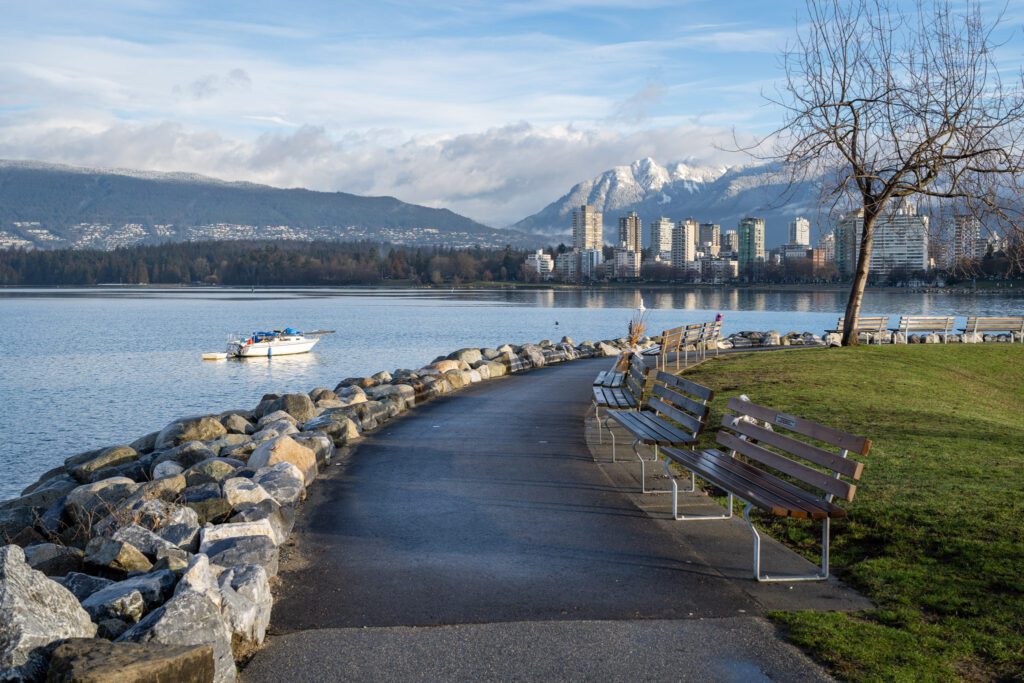

Great suggestions for getaways – I’ve done them all except those hikes in Mt Baker. They’ll have to go on the list, as they look fabulous.
We had never been to Baker until last summer and it was a very pleasant surprise. There are some really great hikes out there – too many to do in a weekend, but that just means you’ll have to make it back someday.
I loved reading about your Weekend Seattle Trip experience. Your descriptions really made it come alive for me. Happy travels!
Thanks for the kind words y’all!